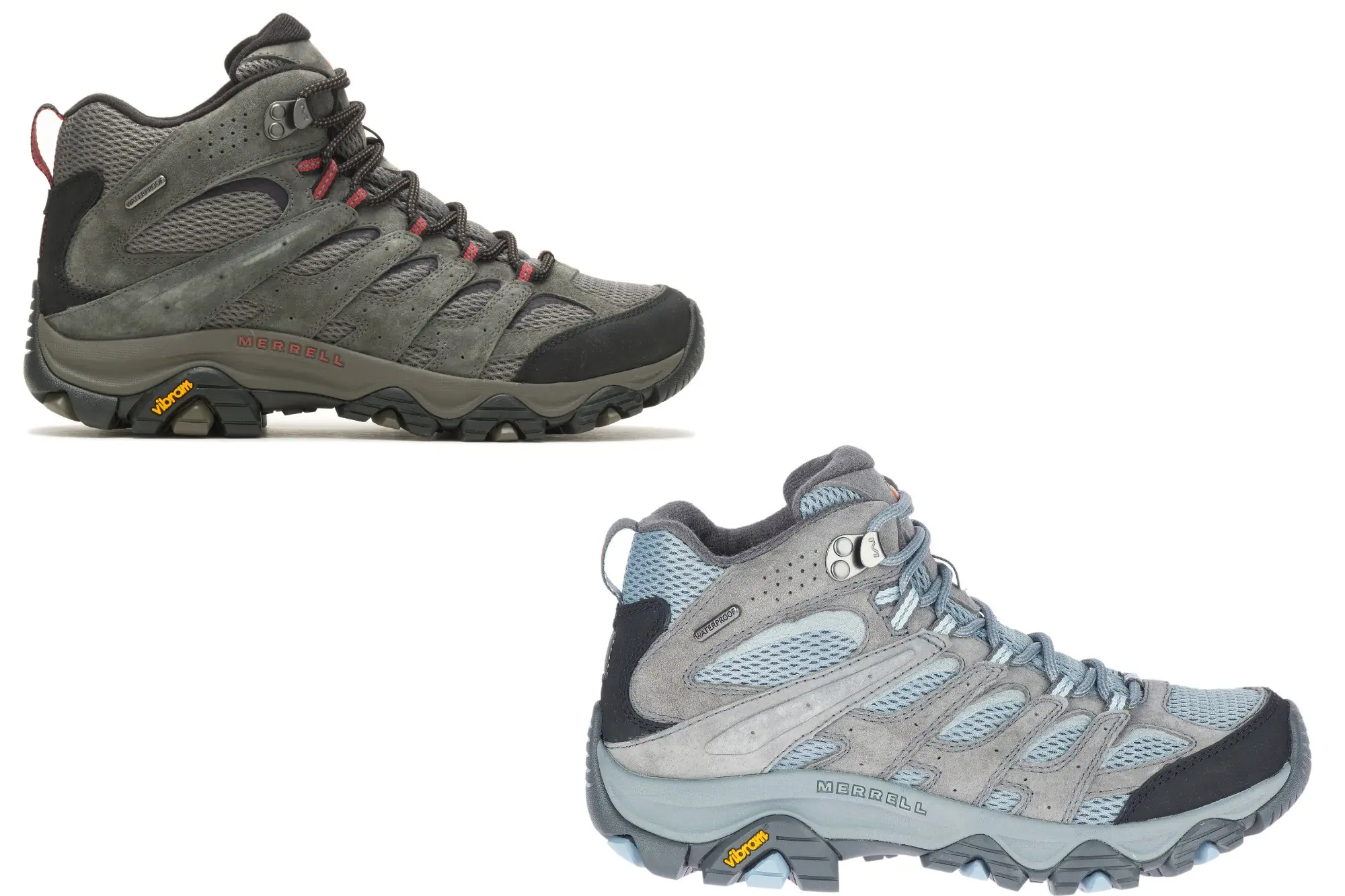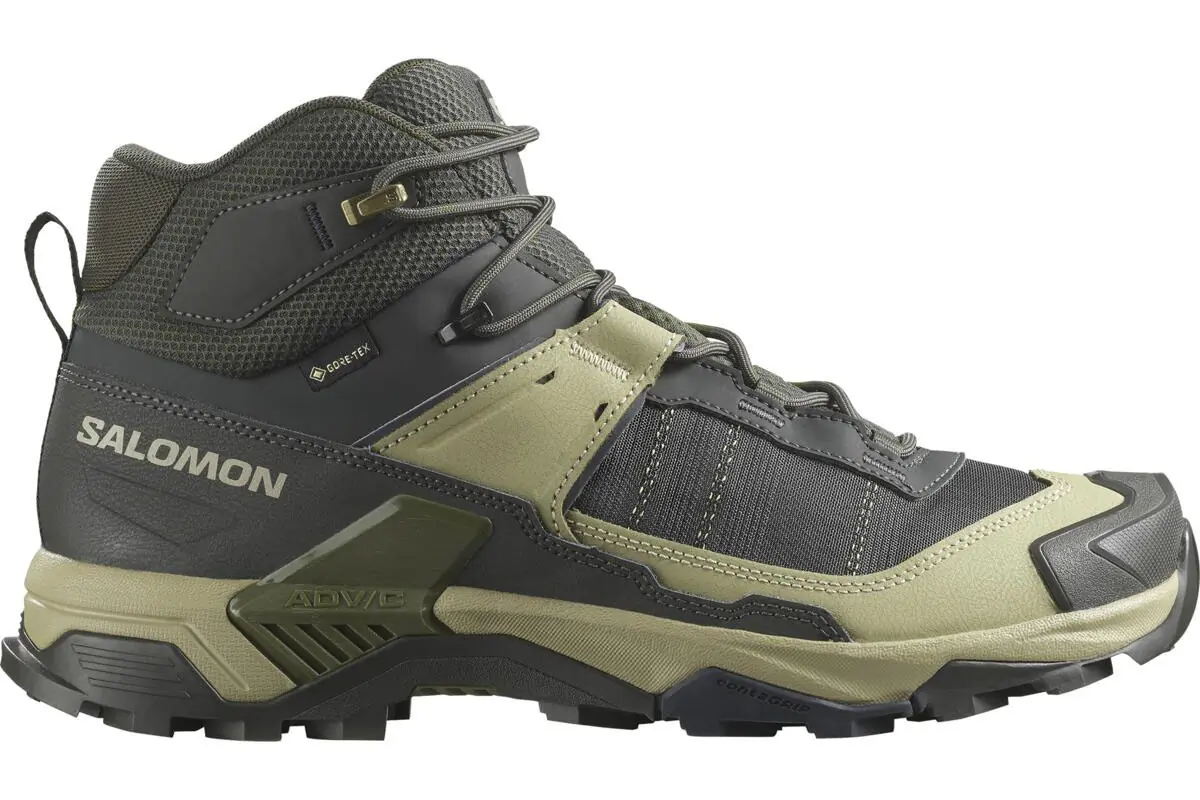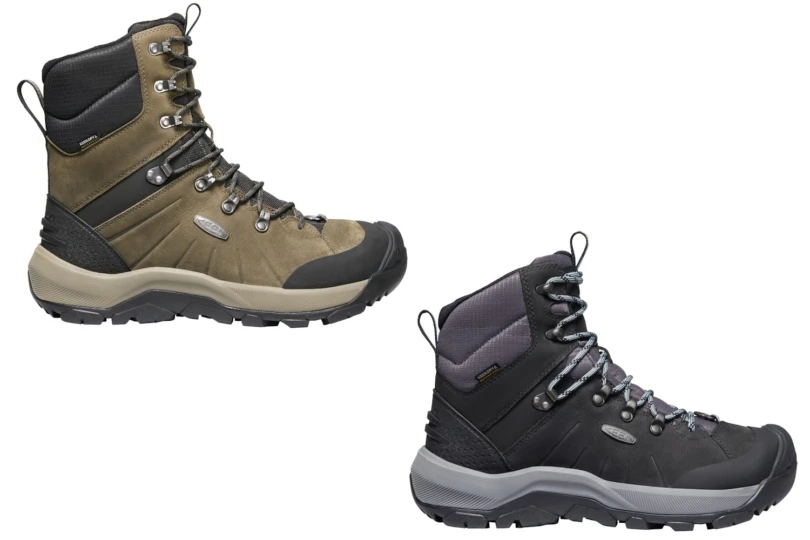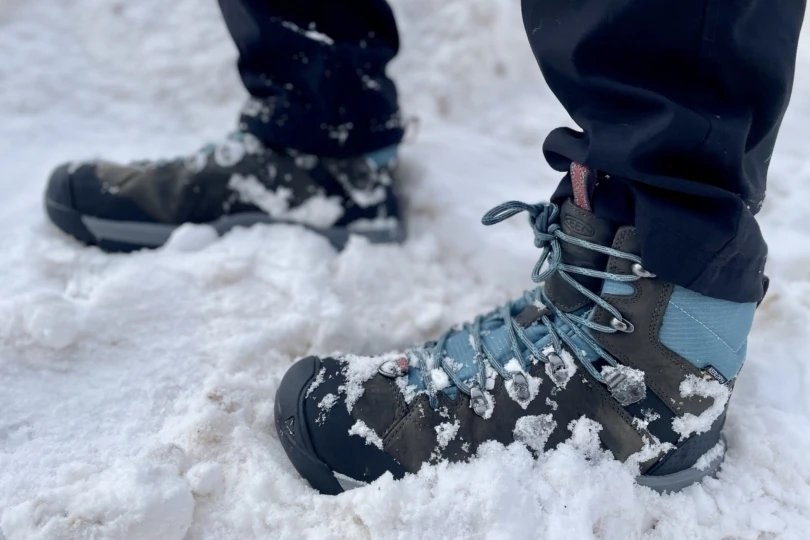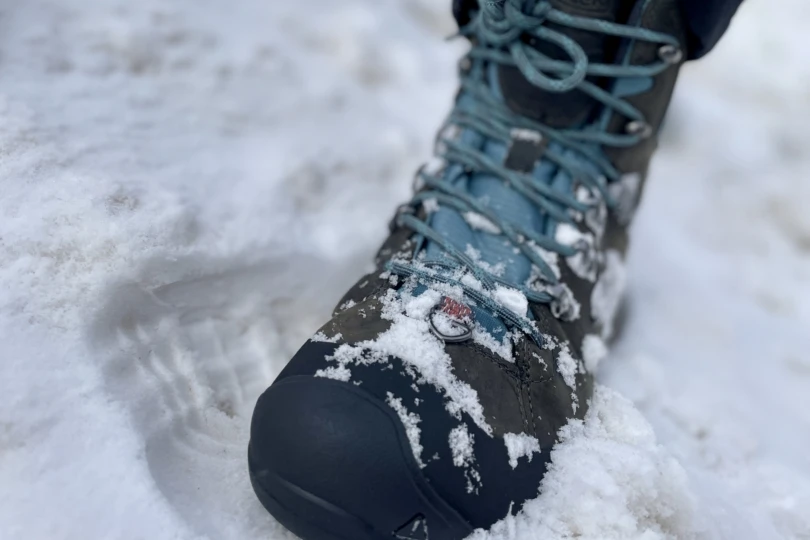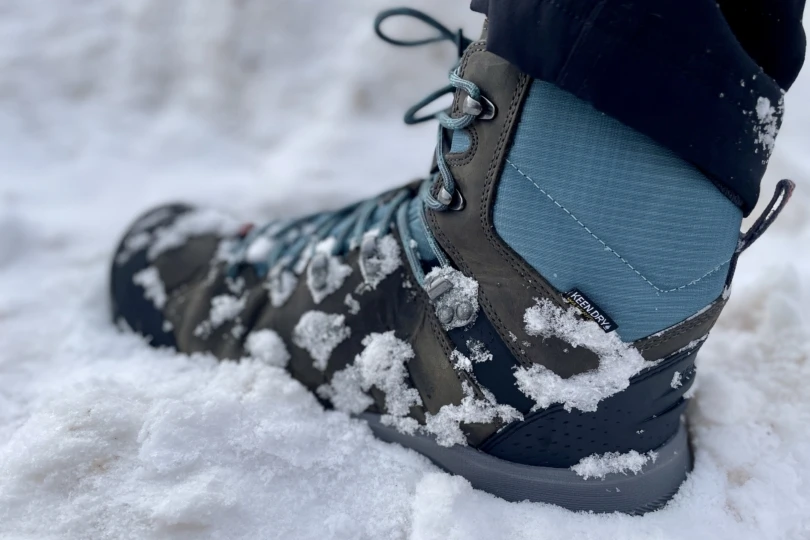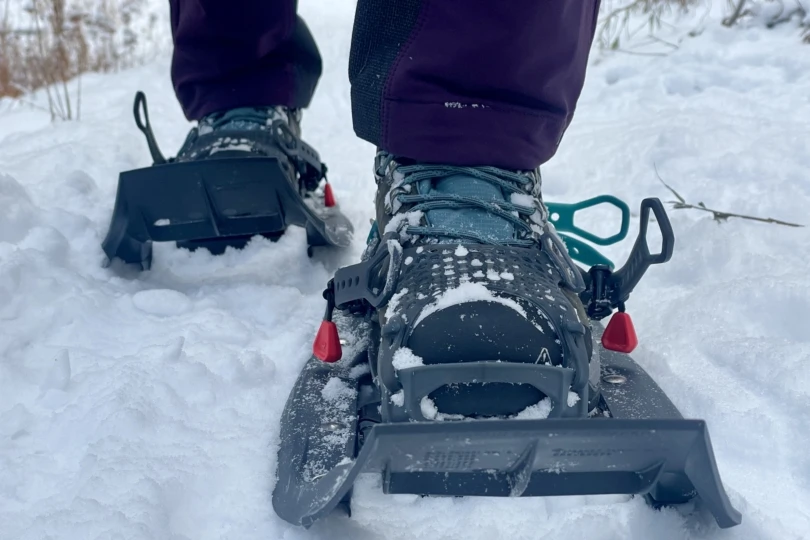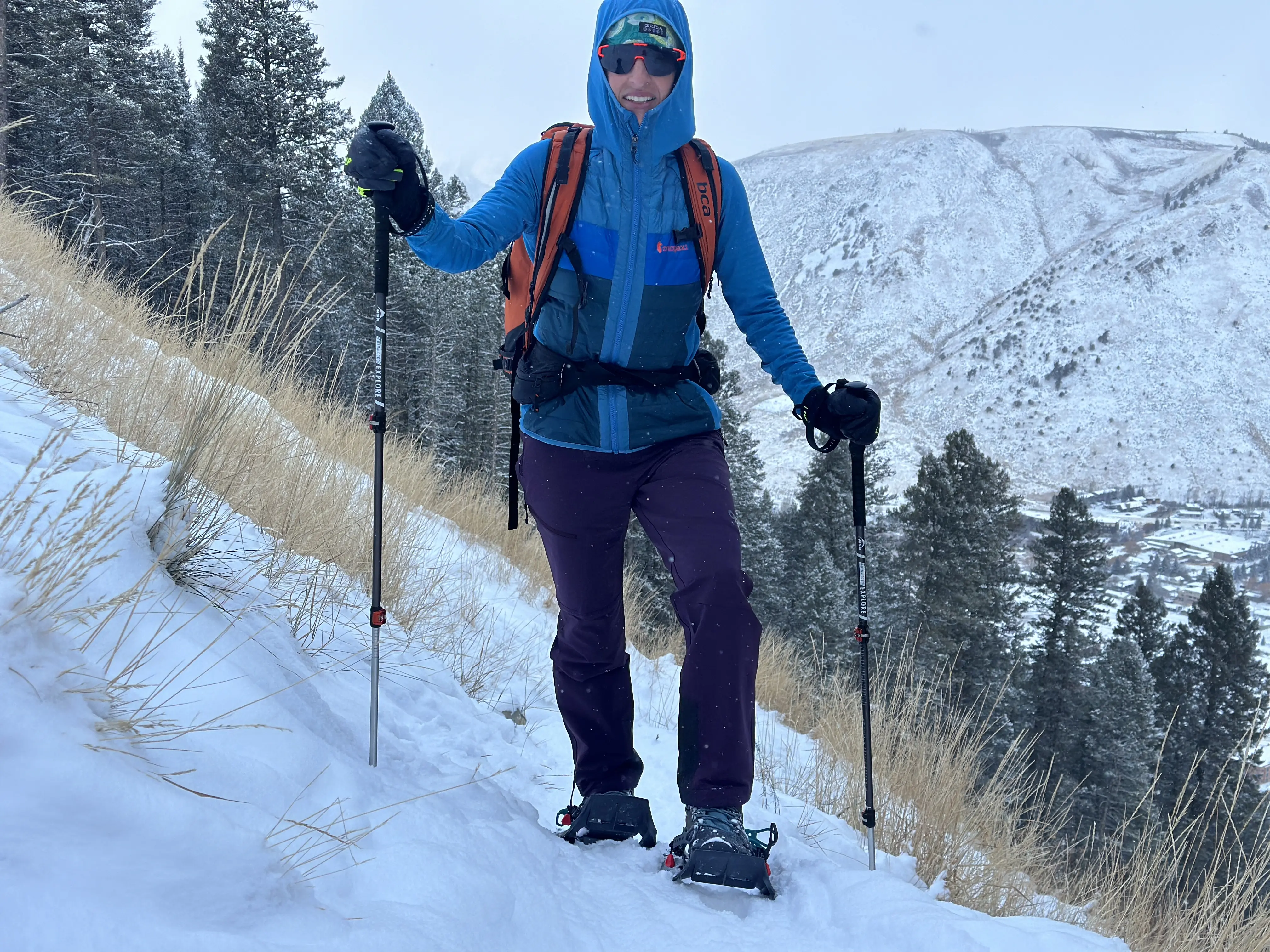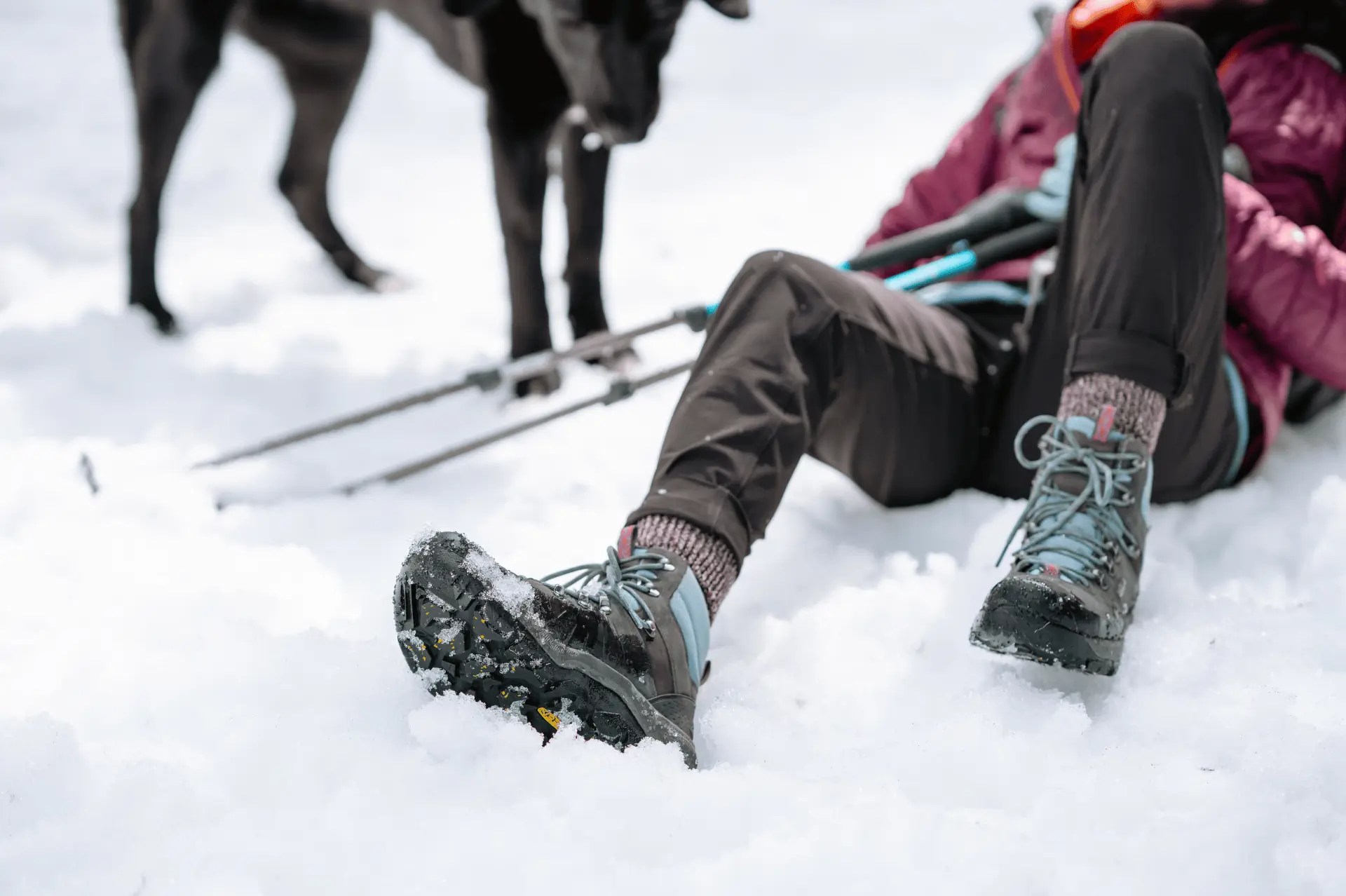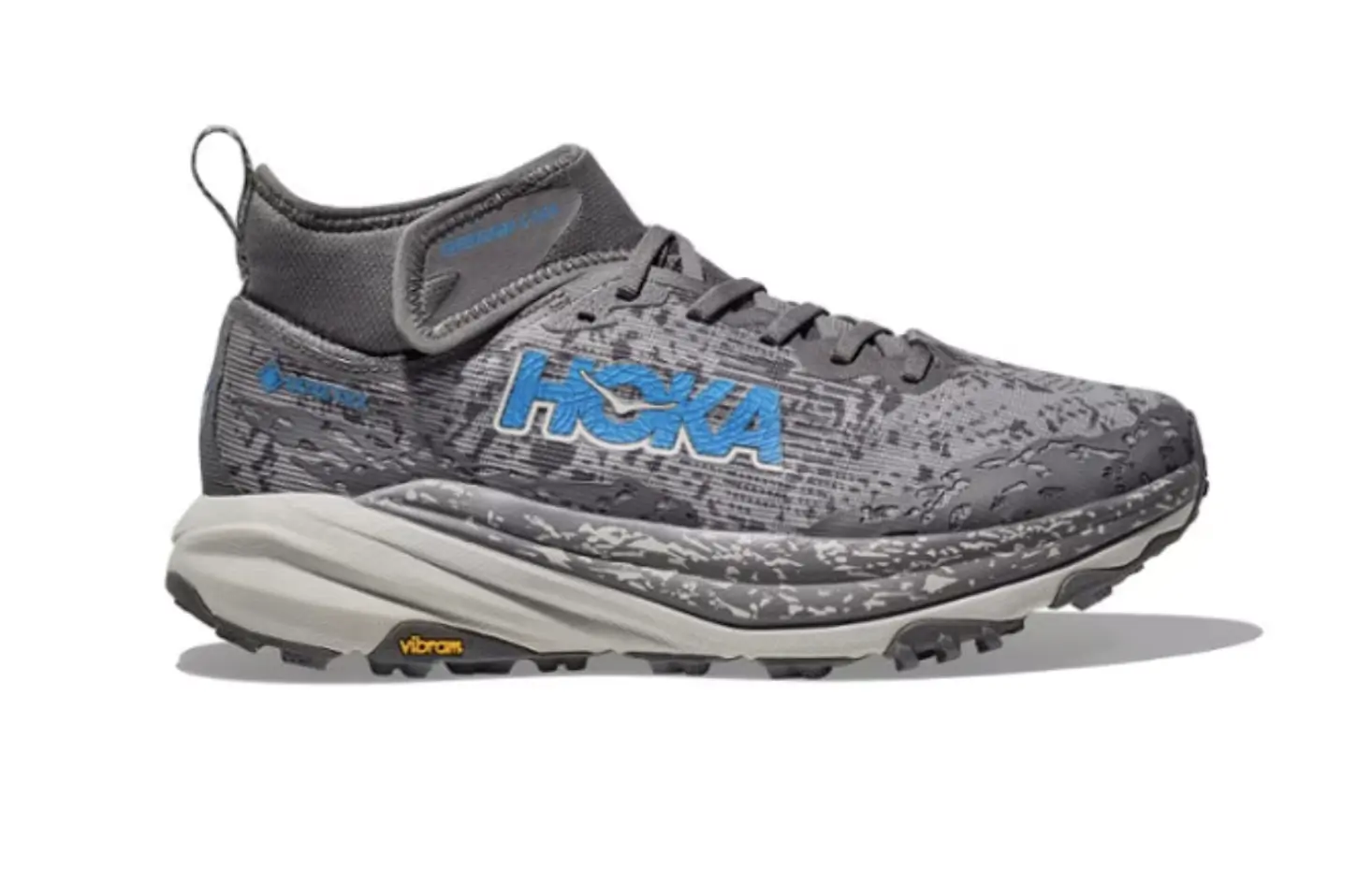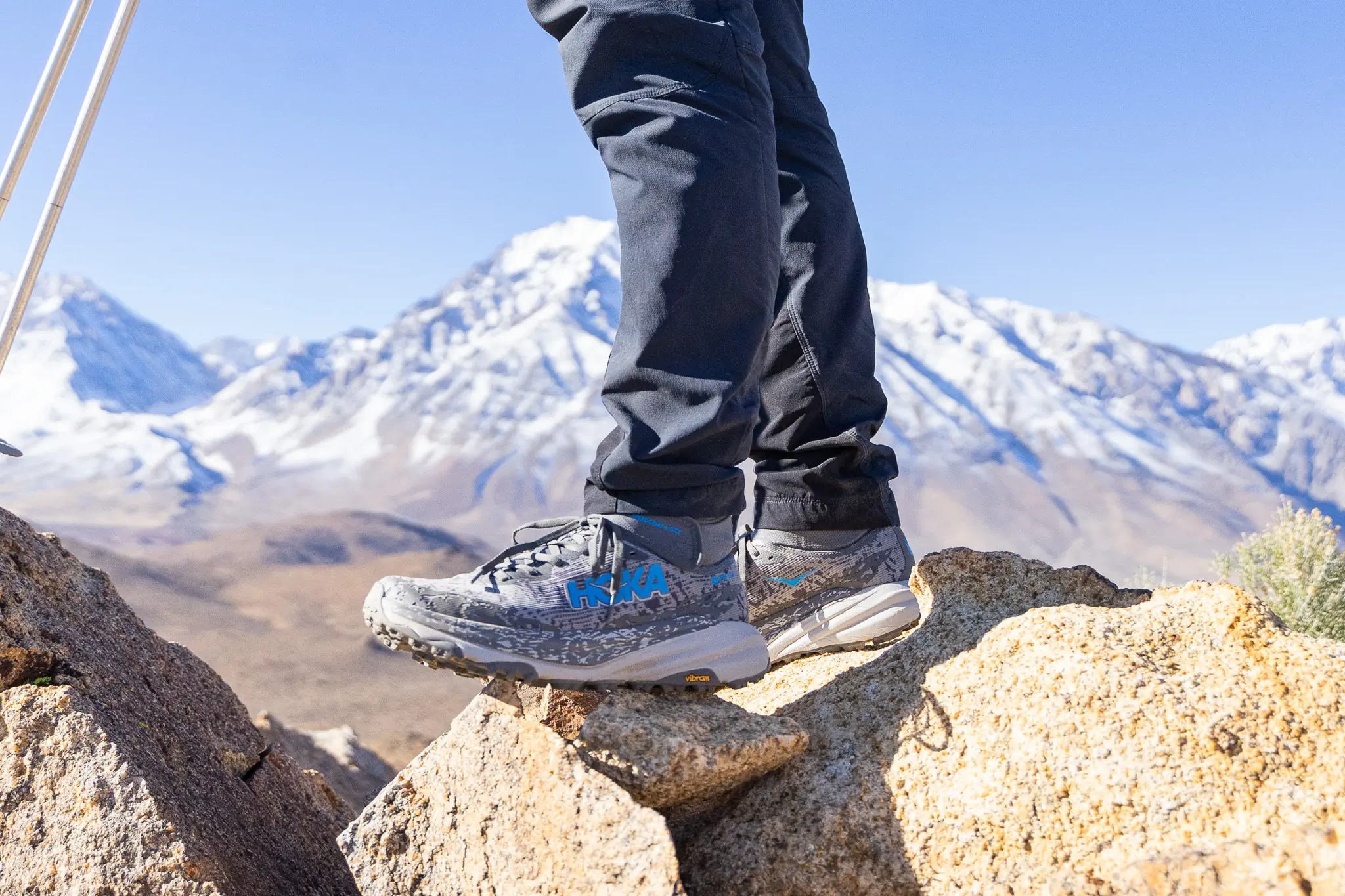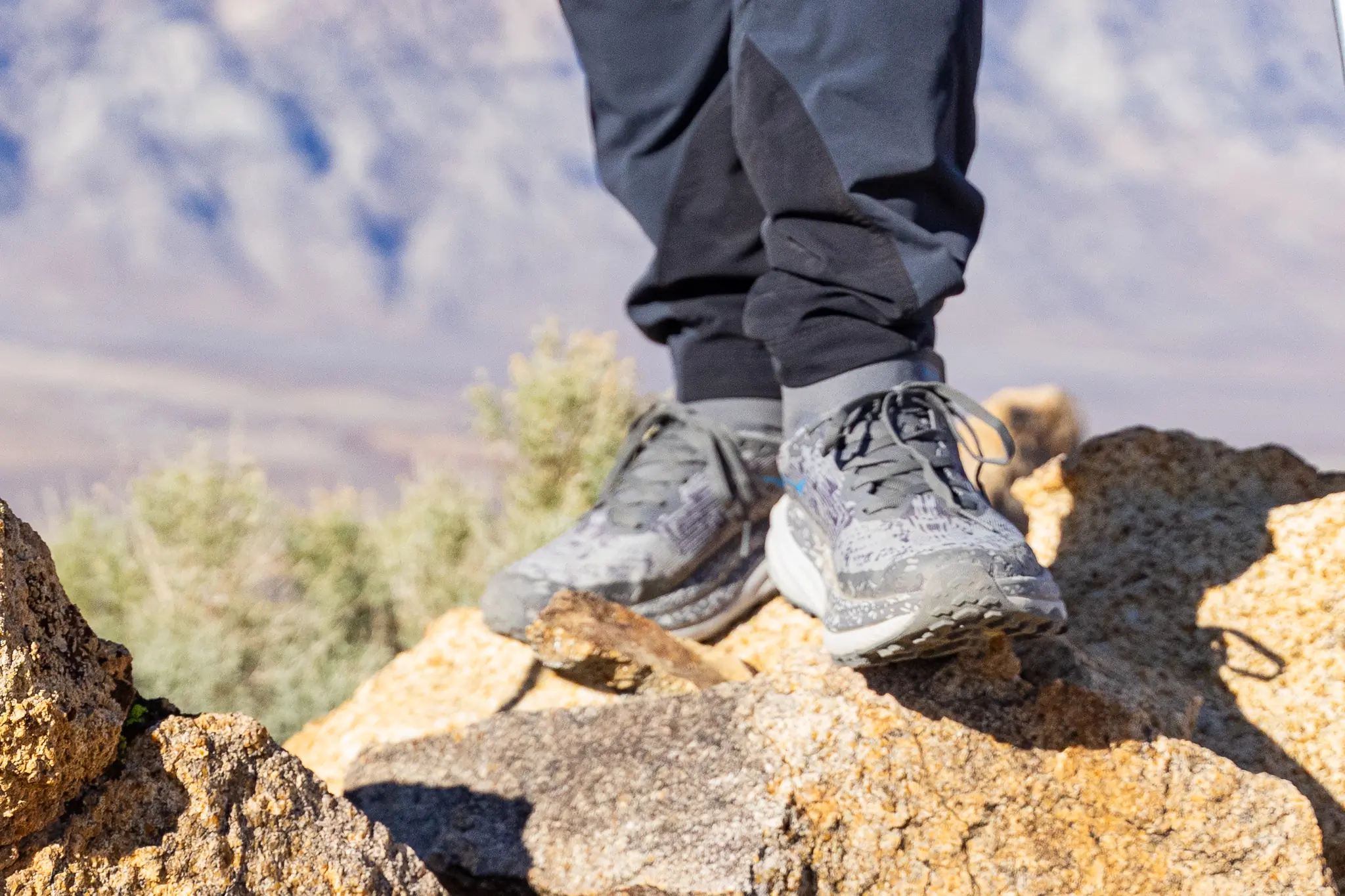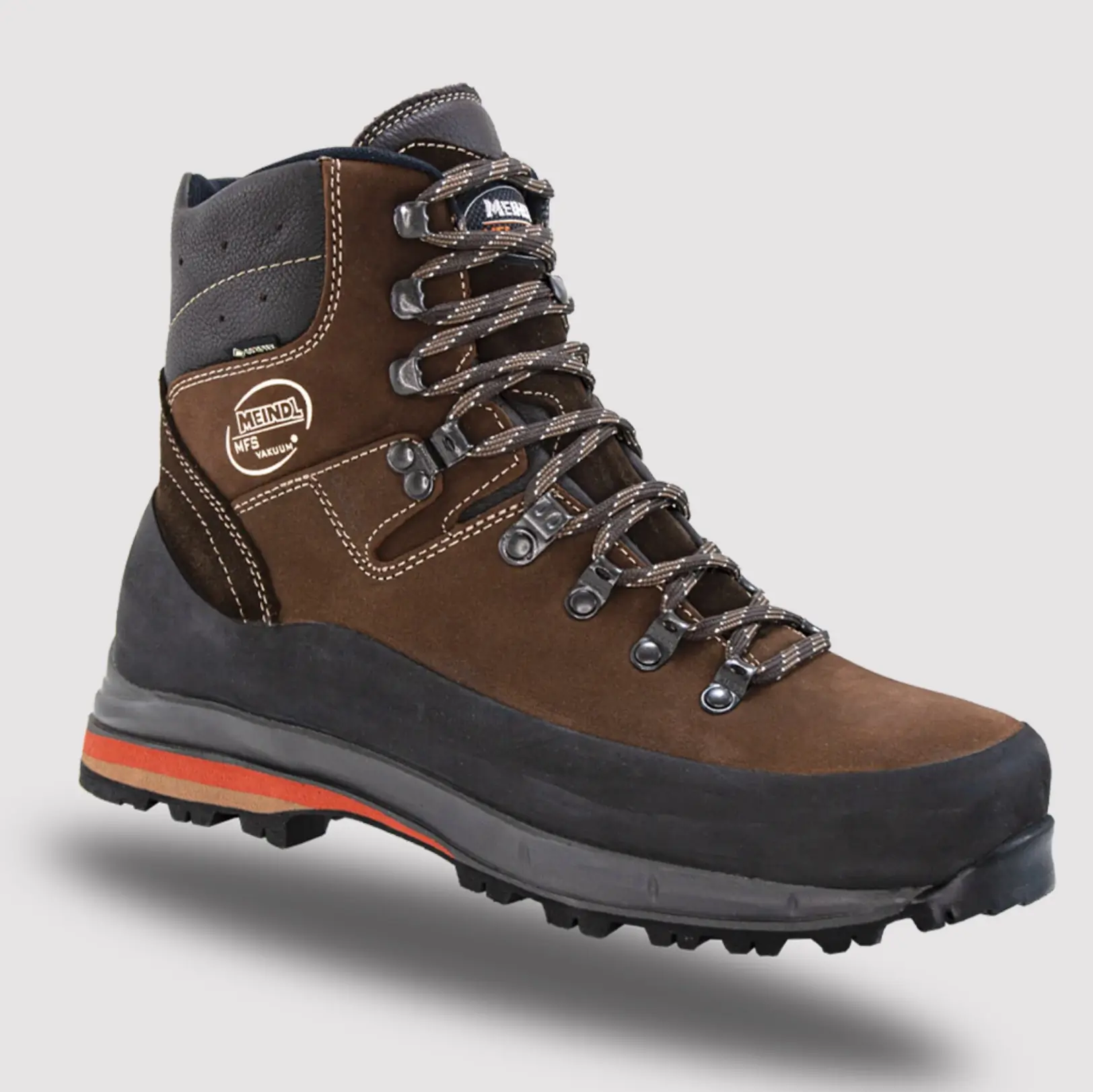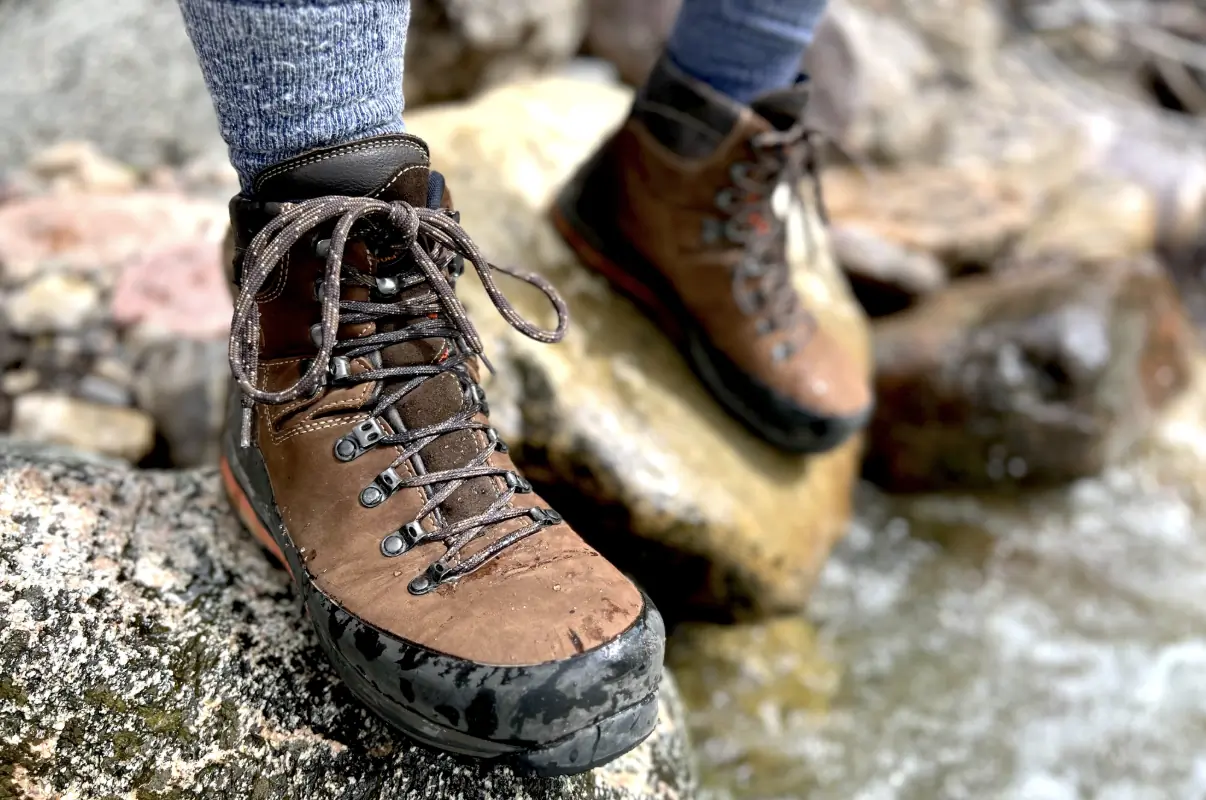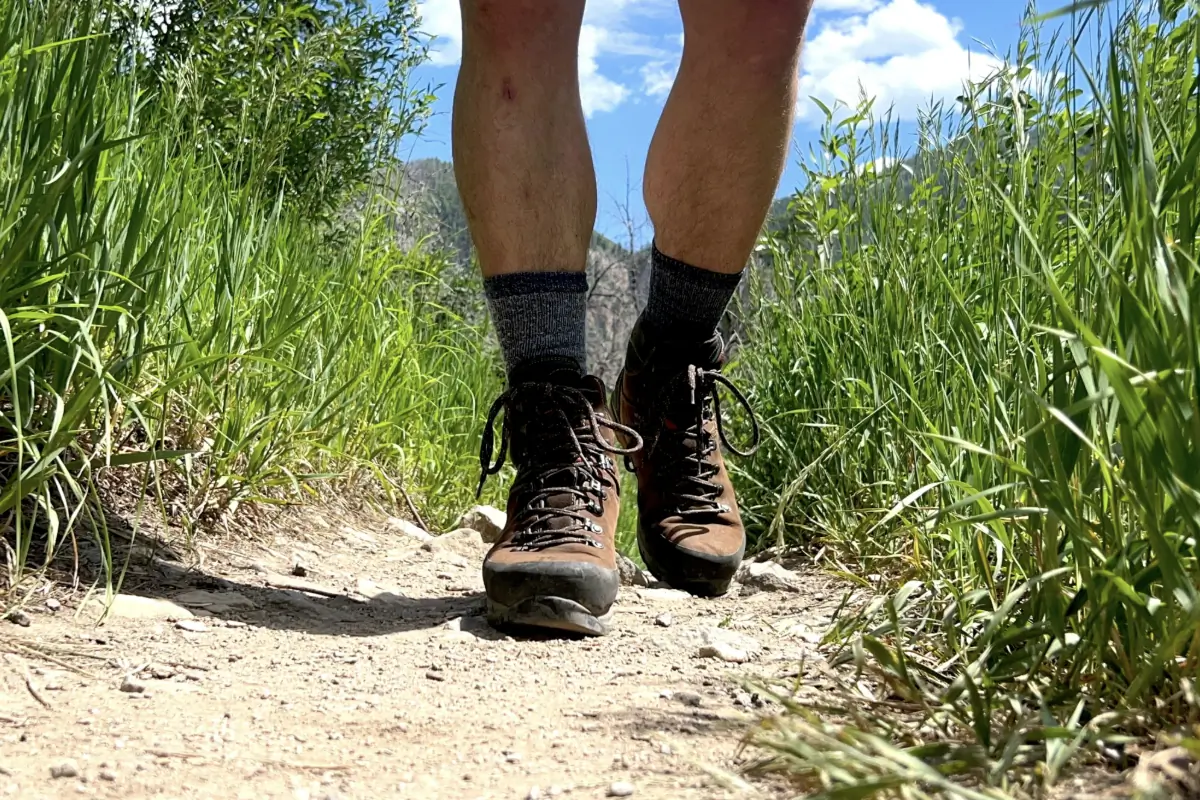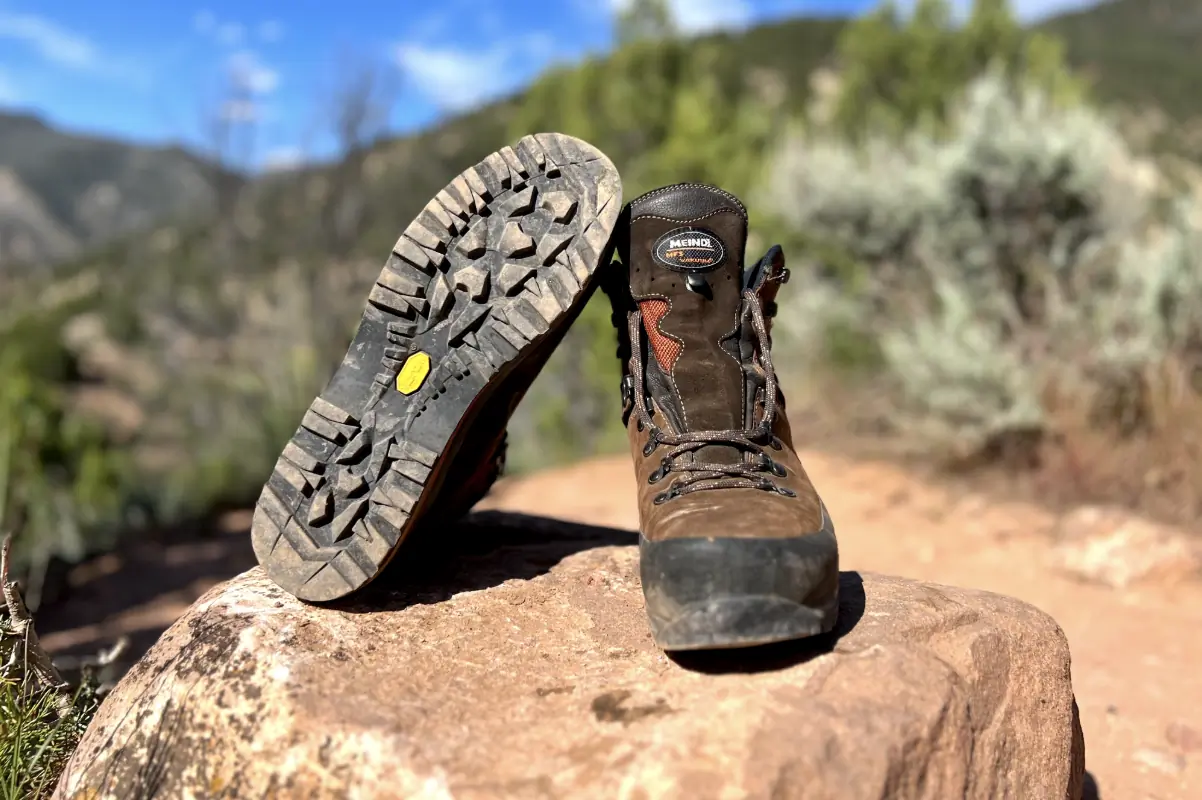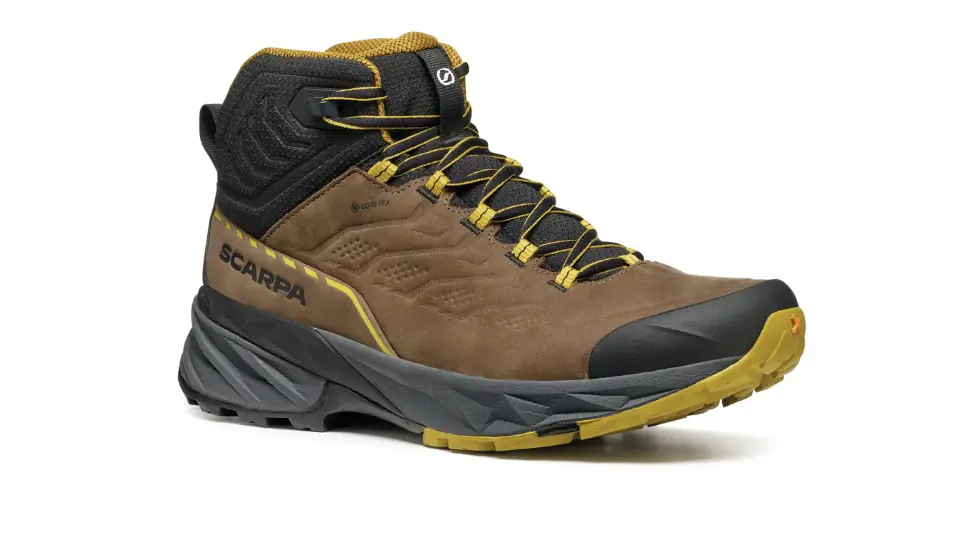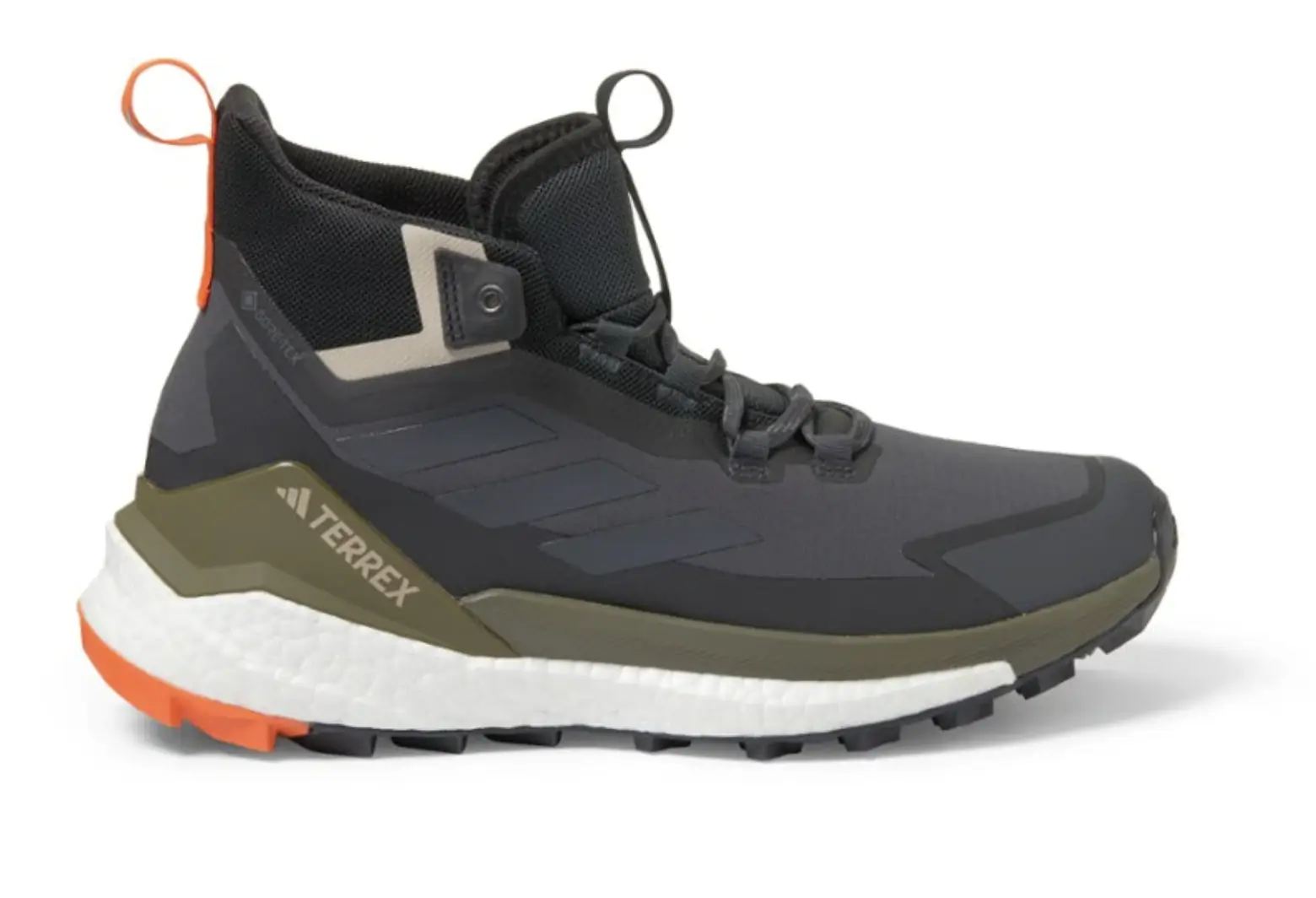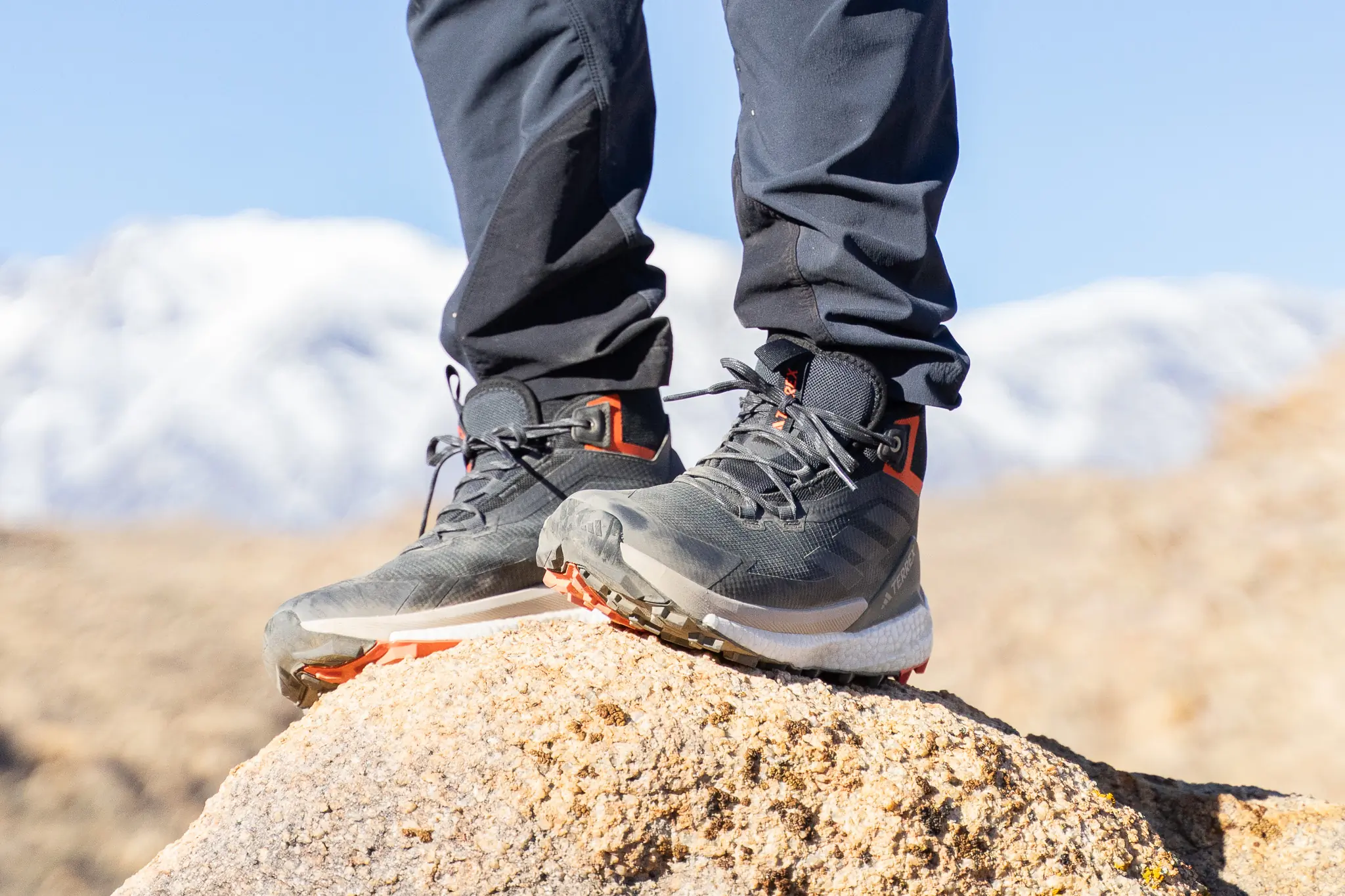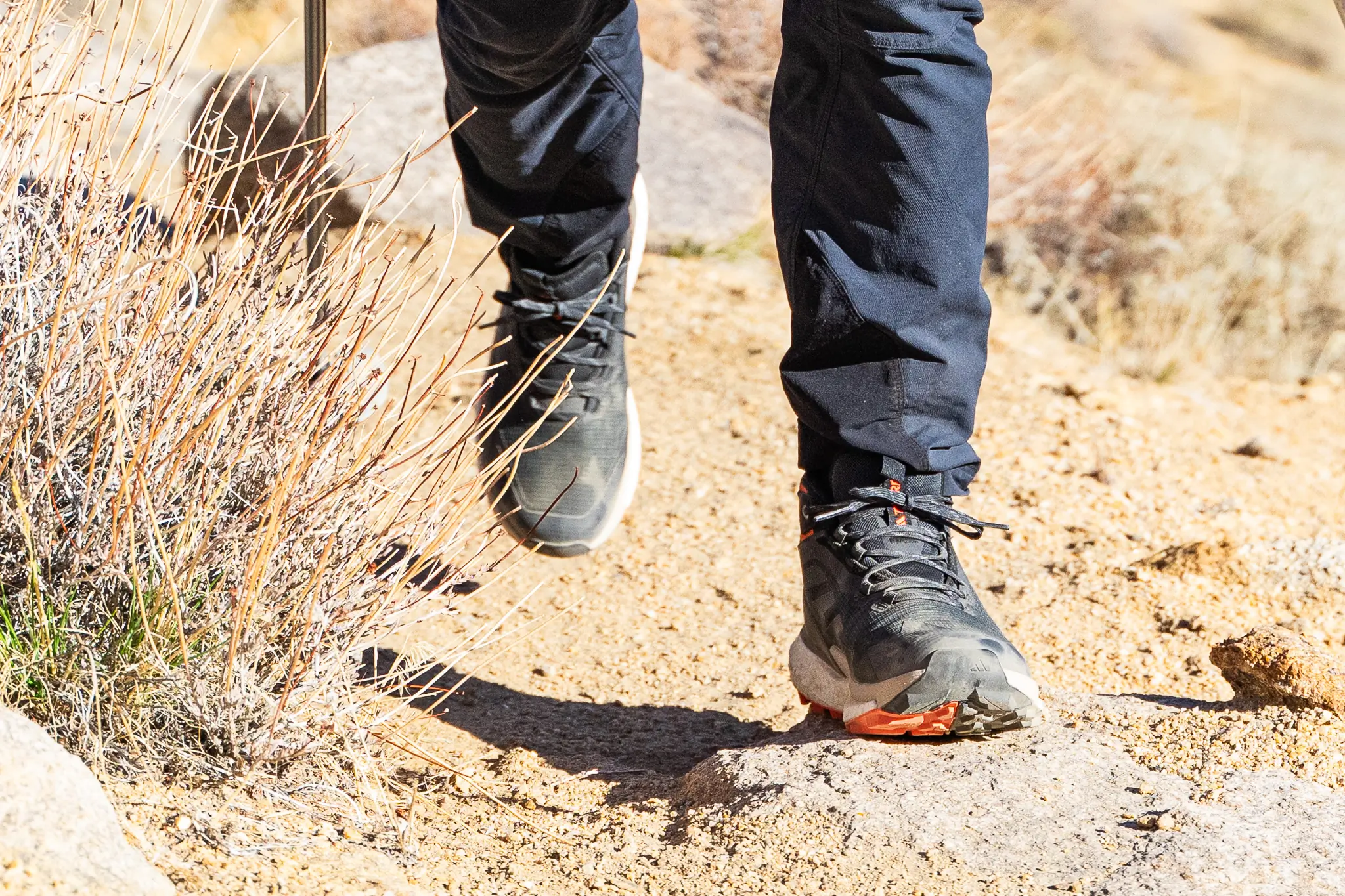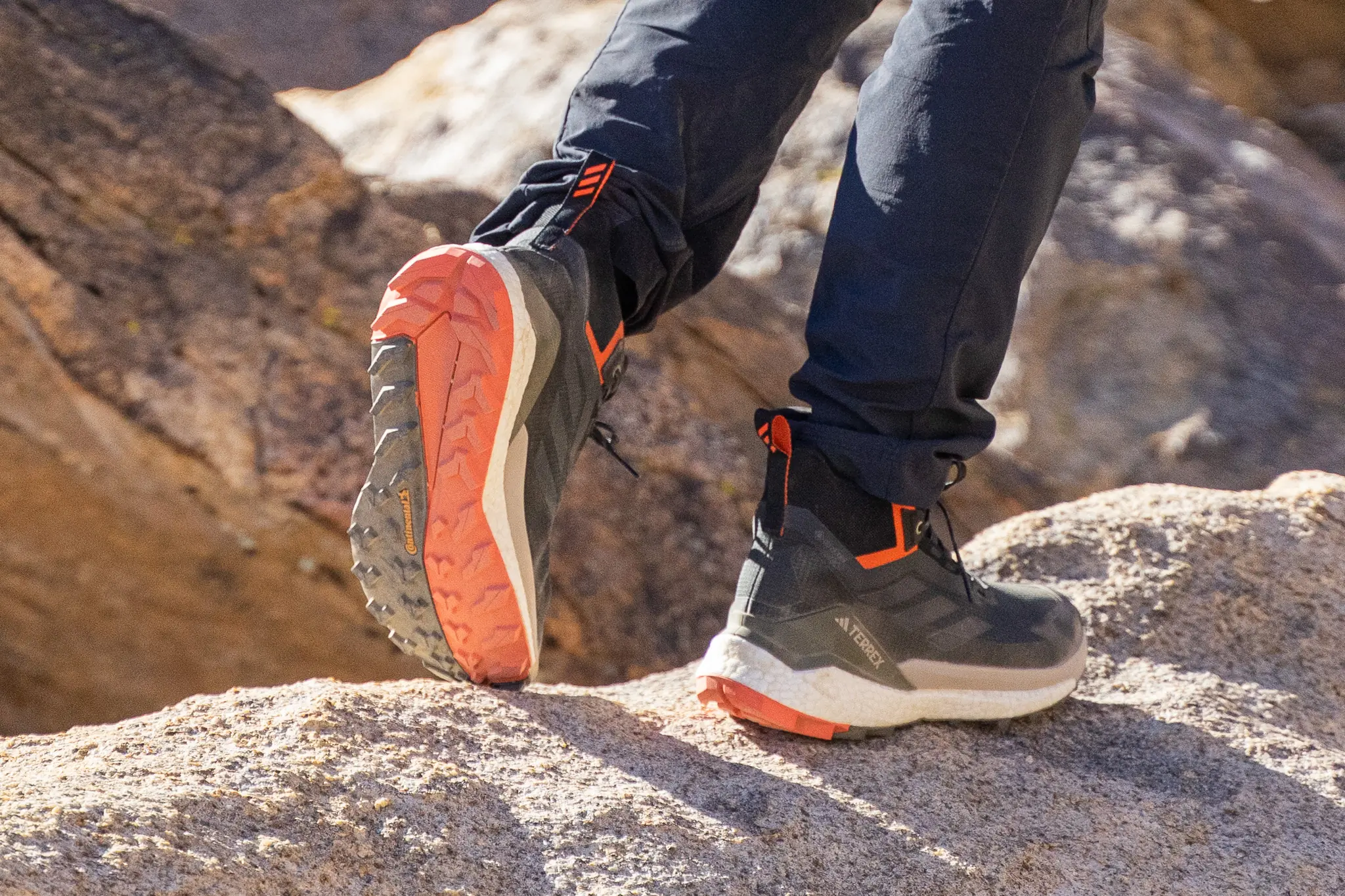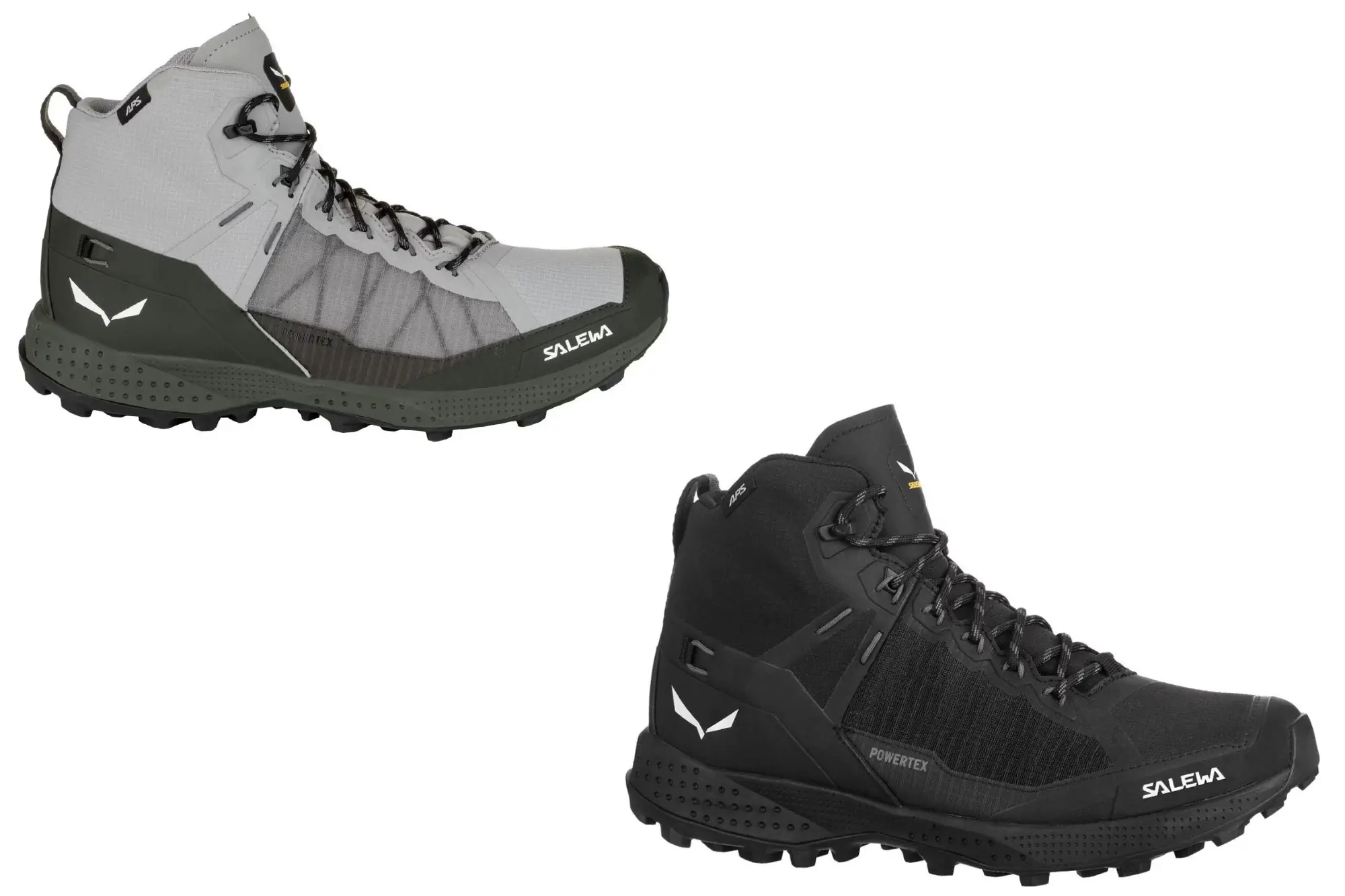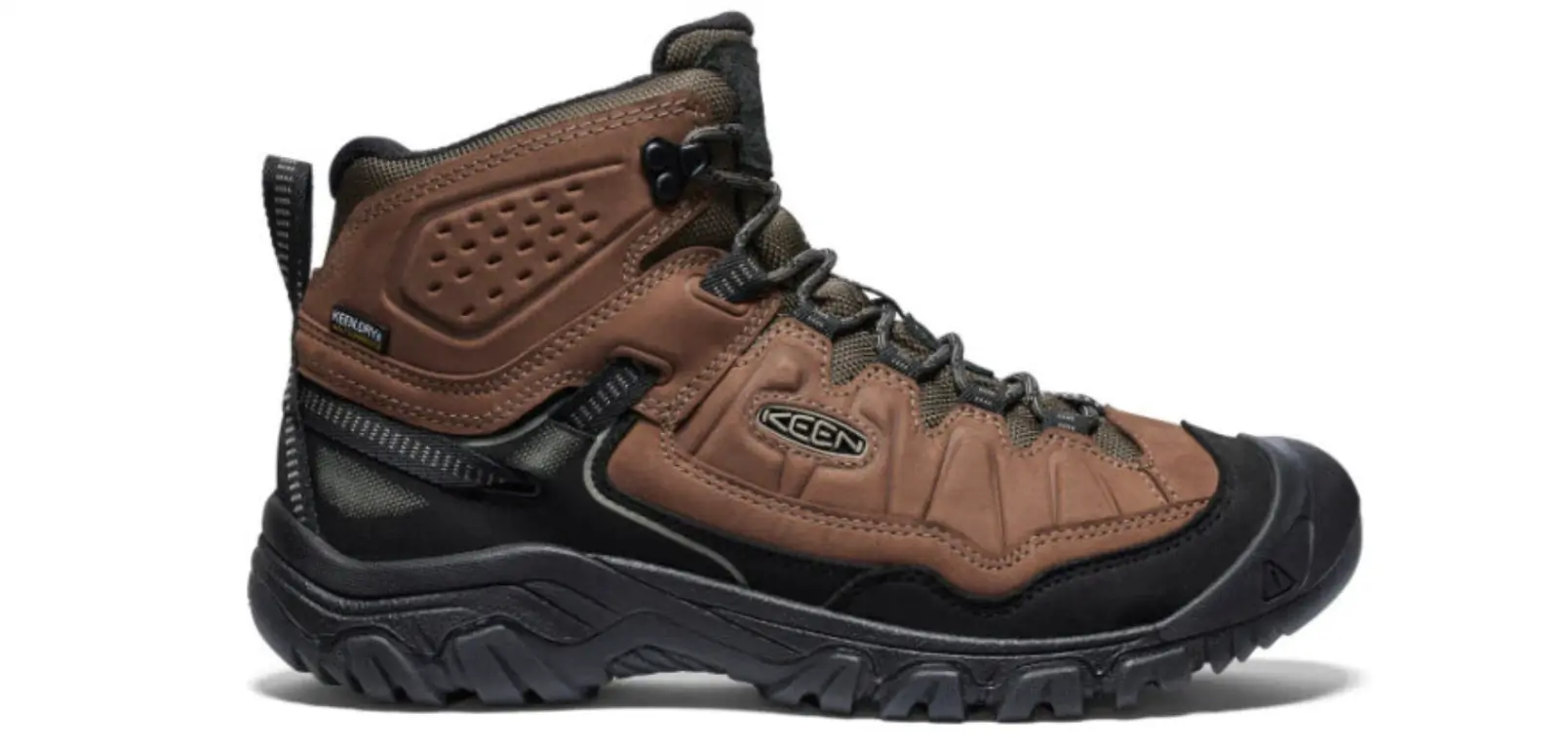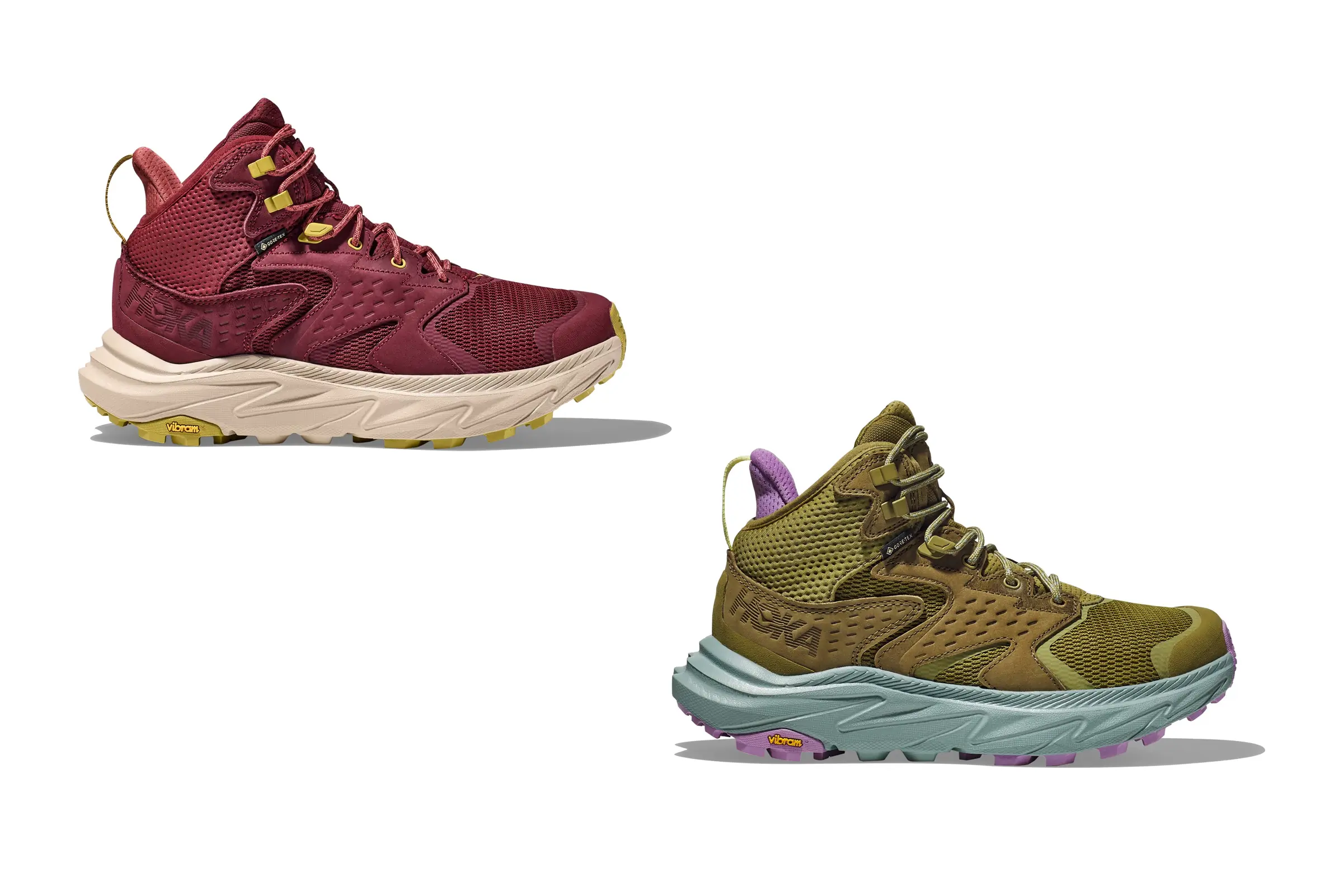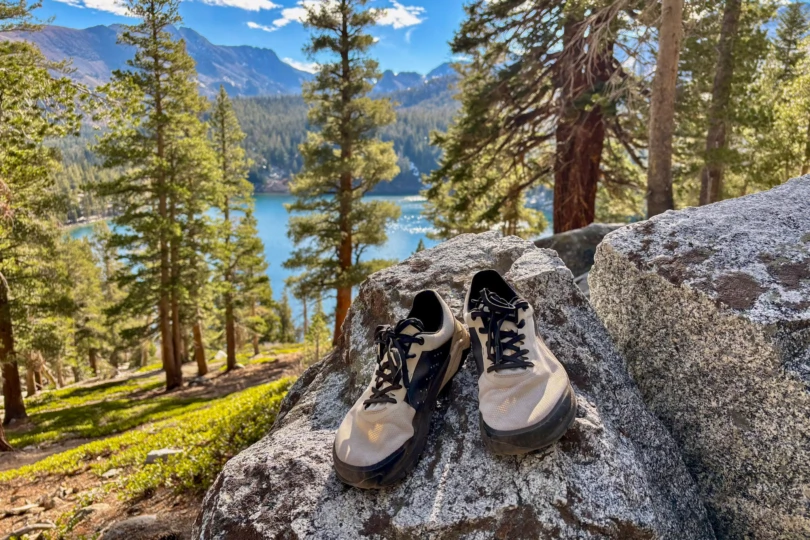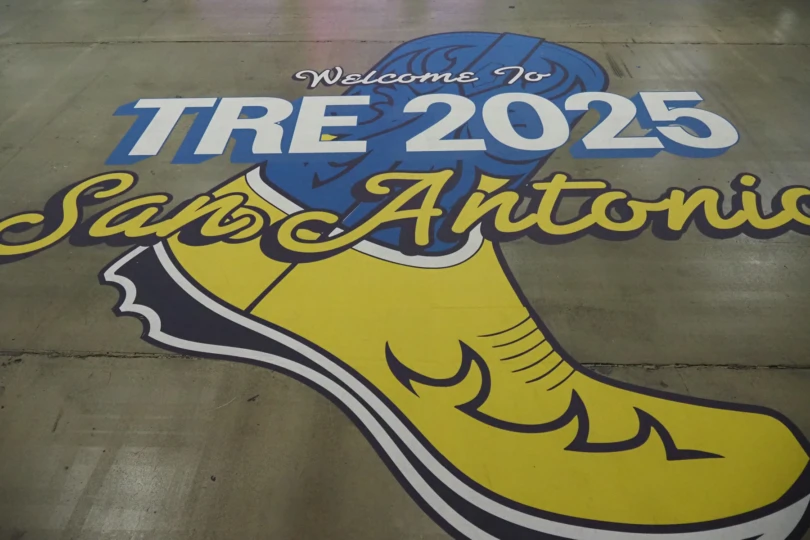Whether striding over a local dayhike or postholing a section of an iconic, multiday backpacking trip, there’s a hiking boot meant just for you. This guide will help you find the best hiking boot for your needs among the rainbow of footwear on the market.
Hiking boots vary dramatically, from heavy, supportive leather boots to ultralight boots based on trail running DNA. For this guide, a range of selections will help you find the right boot based on terrain, weather, and personal preference. Some hikers prefer the lightweight benefits of trail running shoes or dedicated hiking shoes. If you have strong ankles and carry light loads, consider checking out the best hiking shoes instead of boots.
But I, and many of our editors, prefer boots for many uses. My top choice for general hiking is the Salomon Quest 4. Another Salomon model, the X Ultra 5 Mid GTX is my favorite lightweight hiker. The Merrell Moab Mid 3 Waterproof gets the job done on a budget.
This guide has evolved over 5 years of hard product testing to include the best boots of 2025. It will update four more times this year as our team continues to put miles on trails during the summer.
Editor’s Note: This guide was updated on December 4, 2025, to include the KEEN Revel IV Polar Mid and High as the best winter hiking boots. For more cold-weather options, refer to our comprehensive guide to the best winter hiking boots.
The Best Hiking Boots of 2025
Salomon Quest 4 GORE-TEX
- Weight: 2 lbs. 14.4 oz.
- Waterproofing: Yes
- Upper material: Leather and synthetic
- Width: Standard
Pros
- Highly supportive
- Ideal for backpacking with loads
- Durable
- Off-trail capable
Cons
- Heavier than lightweight day hikers
- Too stiff and burly for light use
Merrell Moab 3 Mid Waterproof
- Weight: 2 lbs. 0.7 oz.
- Waterproofing: Yes
- Upper material: Pigskin leather/mesh
- Width: Standard or wide options
Pros
- Affordable
- Waterproof
- Comfortable
Cons
- Wide fit doesn’t work for narrow feet
- Bulky
Salomon X Ultra 5 Mid GTX
- Weight: 1 lb., 15 oz. (pair)
- Waterproofing: GORE-TEX
- Upper material: MATRYX synthetic
- Width: Standard
Pros
- Lightweight
- Good traction
- Short break-in period
Cons
- Too pliable for steep side-hilling or step-kicking
KEEN Revel IV Mid & High Polar Boots
-
Warmth
9.3
-
Weather Protection
9.2
-
Comfort & Fit
9.3
-
Traction
9.3
- Insulation: 200 g insulation
- Shaft height: 4.53" (mid), 5.7" (high)
- Weight: 3 lbs. (mid); 3 lbs., 8 oz. (high)
- Waterproofing: KEEN.Dry breathable waterproof membrane
- Upper: Leather and mesh
- Best for: Long cold hikes, winter peak bagging, snowshoeing
Pros
- Extreme warmth: Mid rated to -25°F, High to -40°F
- Choice of mid or high shaft for mobility vs. deep snow
- Excellent grip on snow and ice
- Waterproof and breathable
- Pairs well with snowshoes and traction devices
Cons
- Heavier and stiffer than lighter winter hikers
- Rigid sole feels clunky for casual wear
HOKA Speedgoat 6 Mid GTX
- Weight: 1 lb. 6.8 oz.
- Waterproofing: Yes
- Upper material: Synthetic
- Width: Standard
Pros
- Fits like a running shoe
- Elastic ankle cuff keeps out pebbles and sand
- Stable hiking platform
- Plenty of cushion
Cons
- Not very much ankle support
- Not as breathable as a trail shoe
Meindl MFS-Vakuum Hiker
- Height: 7.75"
- Weight: 3.65 lbs.
- Waterproof: GORE-TEX
- Upper material: Full-grain Nubuck leather
- Insole: AirActive
- Midsole: EVA polyurethane
- Outsole: Meindl Multigriff 2 by Vibram
- Last: Standard
- Resolable: Yes
Pros
- Extremely comfortable; very fast and painless break-in period
- Heel lock lacing system holds your foot very firmly in place
- Great grip and tread
Cons
- Lacing is somewhat time-consuming
- Lace hooks susceptible to bending
SCARPA Rush 2 Pro Mid GTX
- Weight: 1 lb., 10 oz.
- Waterproofing: GORE-TEX
- Upper material: Nubuck leather
- Width: Narrow
Pros
- Lightweight
- Comfortable
- Nimble
- Supportive for a sneaker-like boot
- Offers great protection in rocky terrain
Cons
- Pricey
- Less arch support than some other hikers
Other Great Boots We Tested
While they didn’t make the top of our list, the following boots have been field tested by GeaarJunkie editors and are very much worthy of your consideration.
- Weight: 1 lb., 4.6 oz. (men's size 9)
- Upper: Oiled Nubuck leather with 100% recycled fabric
- Lining: PFAS-free waterproof membrane
- Midsole: 2D EVA
- Outsole: PRESA HIK-04 & SuperGum
- Insole: Nylon insert
- Available heights: Low and mid
- Last: RHA
- Primary material: Leather
Pros
- Stable and supportive
- Lightweight
- Grippy traction
- Built-in RECCO Reflector
Cons
- Only comes in two colors
- Midsole EVA foam gouges somewhat easily
- Weight: 15.5 oz. (size 9)
- Waterproofing: Yes
- Upper material: Synthetic
- Width: Standard
Pros
- Fast
- Very waterproof
- Good traction
- Lighter than leather boots, more supportive than running shoes
Cons
- Mid-height will restrict ankles compared to low-tops
- Less supportive than true boots
- Weight: 2 lbs., 6 oz.
- Material: Full-grain leather
- Best Use: Hiking, backpacking
- Top Attributes: Vibram Fuga Traction outsole, TPU shank
Pros
- All the Vibram technology baked into the boots
- Ample cushioning without the bulk of a cushioned boot
- Ability to be resoled
Cons
- They don't come with the classic red or green laces
- Weight: 1 lb. 11 oz.
- Waterproofing: Yes
- Upper material: Synthetic
- Width: Standard
Pros
- Lightweight but durable
- Agressive lug pattern
- Uses sustainable materials
Cons
- Difficult to fine-tune-adjust the ankle
- Weight: 2 lb. 1 oz.
- Waterproofing: Yes
- Upper material: Leather
- Width: Standard
Pros
- Breathability from underfoot
- Superb braking lugs
- Lightweight
Cons
- Not ideal for narrow feet
- Weight: 1 lb, 4 oz.
- Waterproofing: Yes, KEEN.DRY
- Upper material: Nubuck leather
- Width: Standard, with roomy toebox
Pros
- Comfortable out of the box
- Good value
- Supportive and stable without feeling clunky
- Roomy forefoot
Cons
- Not suitable for narrow feet
- KEEN’s waterproofing is not as effective as other options
- Not ideal for rugged off-trail use
- Weight: 4 lbs. 2 oz.
- Waterproofing: Yes
- Upper material: Leather
- Width: Standard (break-in period makes them feel a bit narrow at first)
Pros
- Super durable
- Laces rarely need to be replaced
Cons
- Slow break-in process
- Some users report delamination of the outsole
- Weight: 2 lbs., 4 oz.
- Waterproofing: Yes
- Upper material: Waterproof Nubuck leather
- Width: Standard
Pros
- Sustainably made
- Sticky Vibram Megagrip outsole with self-cleaning lug pattern
- Comfortable achilles cushion
Cons
- Runs a bit large
- Swallowtail heel can snag on roots and rocks
Hiking Boot Comparison Chart
| Hiking Boot | Price | Weight (Pair) | Waterproof | Upper Material | Width |
|---|---|---|---|---|---|
| Salomon Quest 4 | $230 | 2 lbs., 14.4 oz. | Yes | Leather and synthetic | Standard |
| Merrell Moab 3 Mid Waterproof | $150 | 2 lbs., 0.7 oz. | Yes | Pigskin leather/mesh | Standard or wide |
| Salomon X Ultra 5 Mid GTX | $185 | 1 lb., 15.5 oz. | Yes | Polyurethane-coated leather/textile | Standard |
| KEEN Revel IV Polar | $190-$210 | 3 lbs. (mid); 3 lbs., 8 oz. (high) | Yes | Leather and mesh | Standard to wide |
| HOKA Speedgoat 6 Mid GTX | $180 | 1 lb. 6.8 oz. | Yes | Synthetic | Standard |
| Meindl MFS-Vakuum Hiker | $310 | 3 lbs. 10 oz. | Yes | Leather | Standard |
| SCARPA Rush 2 Pro Mid GTX | $219 | 1 lb., 10.2 oz. | Yes | Nubuck leather and fabric with recycled content | Standard to narrow |
| SCARPA Moraine | $179 | 1 lb., 4.6 oz. | Yes | Oiled Nubuck leather with 100% recycled fabric | Standard to narrow |
| TERREX Free Hiker 2.0 GORE-TEX | $220 | 1 lb. 15.4 oz. | Yes | Synthetic | Standard, extra wide in the heel |
| Danner Mountain 600 EVO | $250 | 2 lbs.,6 oz. | Yes | Full-grain Leather | Standard |
| KEEN Targhee IV | $165 | 1 lb. 4 oz. | Yes | Nubuck leather | Standard, with roomy toebox |
| Salewa Pedroc Pro Mid PTX Boots | $200 | 1 lb., 11 oz. | Yes | Synthetic | Standard |
| La Sportiva Nucleo High 2 GTX | $239 | 2 lb., 1 oz. | Yes | Leather | Standard |
| Asolo TPS 52 xGV EVO | $360 | 4 lbs., 2 oz. | Yes | Leather | Standard |
| Hoka Anacapa 2 Mid GTX | $195 | 2 lbs., 4 oz. | Yes | Waterproof Nubuck leather | Standard |
How We Tested Hiking Boots
Meet GearJunkie’s Test Team

The GearJunkie team has tested hundreds of pairs of hiking boots. We’ve hiked along gradual city park paths and backpacked through rugged alpine terrain in our search for the best hiking footwear on the market. The recommended boots on this list are the result of our thorough and never-ending field testing.
I’m Editorial Director Sean McCoy, your guide to hiking boots (and many other subjects, too). I broke trail with this guide back in July 2020, crafting our initial selection of eight worthy hiking boots. Whether packing out a kill from deep in the backcountry or clocking miles on cruiser singletrack — I am intimately aware of the importance of proper footwear for streamlined adventures.
Senior Editor Chris Carter took over this guide in August 2022 through 2024. He combed through his stinky shoe rack, scrubbing through online hiking forums, and endlessly bugging his dirtbag backpacking buds ever since to narrow in on a succinct list.
Chris has thru-hiked the Triple Crown of long trails in the United States: the Pacific Crest Trail, the Continental Divide Trail, and the Appalachian Trail. He knows the importance of properly fitting, comfortable boots for long backpacking trips and is extremely particular about the footwear he depends on in the wild.
He moved on to other work in 2025, and I took back the reigns of this guide, working with the talented team of editors at GearJunkie.
Durability Testing
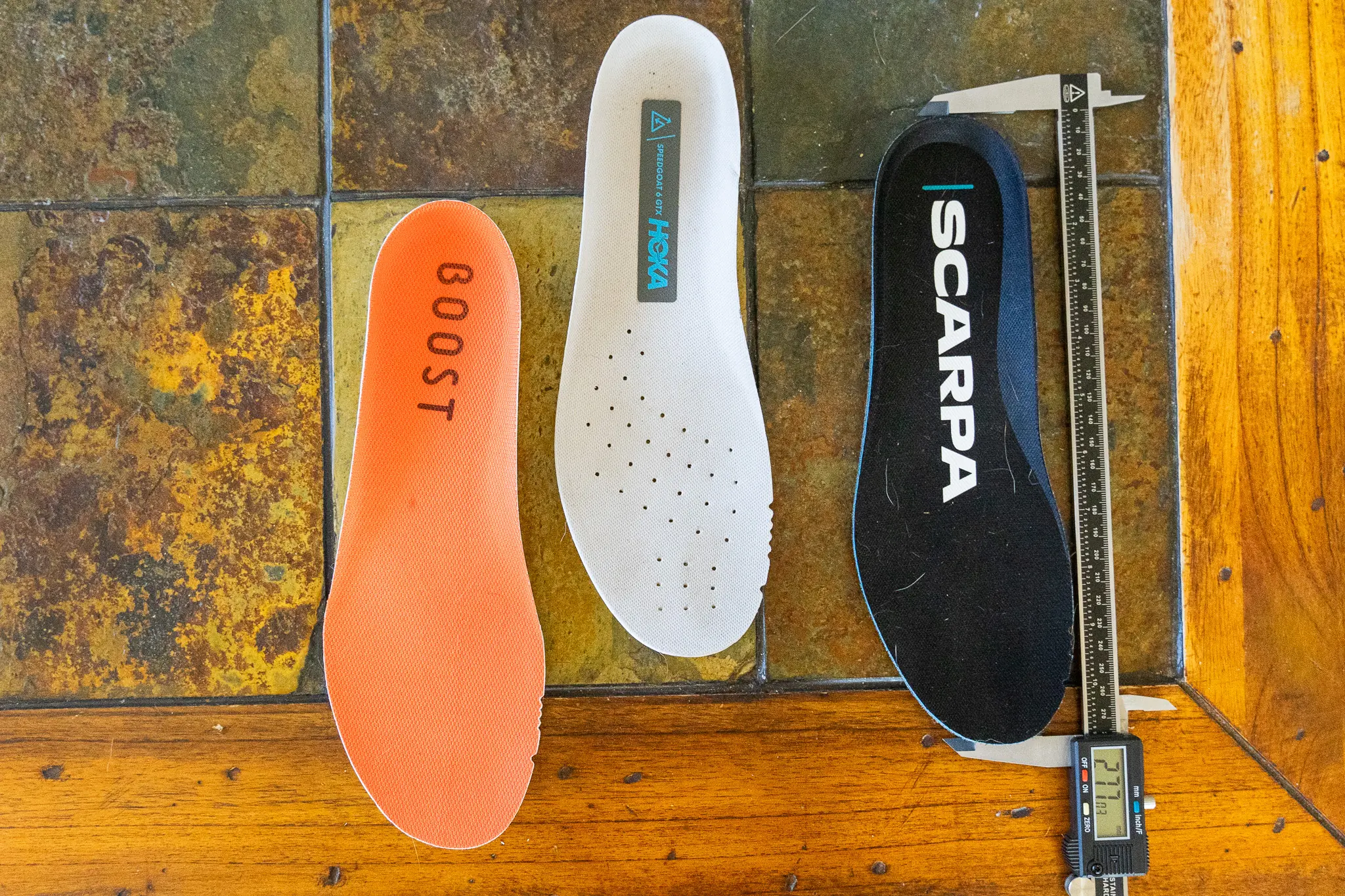
When I assess a boot for its durability, I wear it regularly and keep a close eye on long-term performance. When we test a boot for support and stability, we trudge through rough terrain and pay extra attention to ground feel and roll resistance.
The boots in this guide have proven worthy over a minimum of five days of hard use. I realize that is a very minimum number, but it’s enough to see initial wear with a practiced eye. This is the wear period that begins to show scuffing on outsoles, wear points on the upper, and initial delamination points.
Most of the boots in this guide have been tested vastly more. I hiked the tour du Mont Blanc in 2024, testing boots with my wife. I hike at least two days a week in Colorado, and spend many hours off-trail exploring with my German shorthaired pointer.
Waterproof Testing
Our waterproofing testing involves exposure to puddles, precipitation, and other elements that you’re likely to encounter on the trail. The boots in this guide all spent a half-hour of direct water exposure in early testing. All GORE-TEX products have also been through GORE’s rigorous water-resistance lab testing.
Our recommendations are not fixed in time. As new hiking boots hit the market, we’ll be waiting to put them to the test. If they’re exceptional, we’ll be sure to add them to this list of the best hiking boots on the market.
Hiking Boots vs. Hiking Shoes
This is one hotly debated topic, both on trails and around the GearJunkie office. In 2025, many hikers prefer hiking shoes, or even trail running shoes, for backpacking and day hiking.
Personally, I find true hiking boots to be the best choice for serious hiking. And by “serious hiking,” I mean carrying a pack with your food, shelter, and equipment for long, multi-day hikes. It usually means long hours on your feet. And it often means rough trails, water crossings, snow bridges, scree, mud, and more. On this kind of hike, I want a burly boot that keeps my feet dry, protected, and capable.
Others may disagree. And boots can often be overkill for short hikes, hot temps, or lightweight backpacking. As an ultramarathon runner, I certainly see a place for hiking in lighter shoes.
For some lighter-weight options, take a look at our guide to the best hiking shoes, and for a women’s-specific take on boots, check out the best hiking boots for women.
Buyer’s Guide: How to Choose a Pair of Hiking Boots
Choosing the optimal hiking boot is an ever-complicated and personal endeavor. We all have unique foot shapes and needs on the trail, so research and testing are often critical in finding boots with that perfect blend of fit and function.
Boots built for durability and stability tend to be less forgiving than most footwear. And because you’re often wearing them for hours on end, they require a more precise fit. Here are a few things that can help you find the best boot for your foot.
Hiking Boot Components: Uppers, Midsoles, and Outsoles
Hiking boots — and hiking shoes — are composed of three main components: the upper, midsole, and outsole. The design of each element helps dictate how durable, breathable, and water-resistant the boot is going to be.


Uppers
A hiking boot’s upper is the outer material on the top and sides of the boot. There are a handful of materials commonly used in hiking boot uppers, but generally, uppers are either leather or synthetic.
Leather uppers are more traditional-looking, and they tend to be highly durable and abrasion-resistant. However, they sometimes require long-term care to prevent cracking and unsightly aging.
Synthetic uppers tend to be lighter than leather. They also tend to dry faster and generally cost less. An example of a synthetic upper would be TERREX Free Hiker 2.0 GORE-TEX.
Typically, synthetic uppers are not as durable as leather, but modern advances seem to be closing the gap. For those who prefer not to use animal products, synthetic uppers are obviously the way to go.
Midsoles
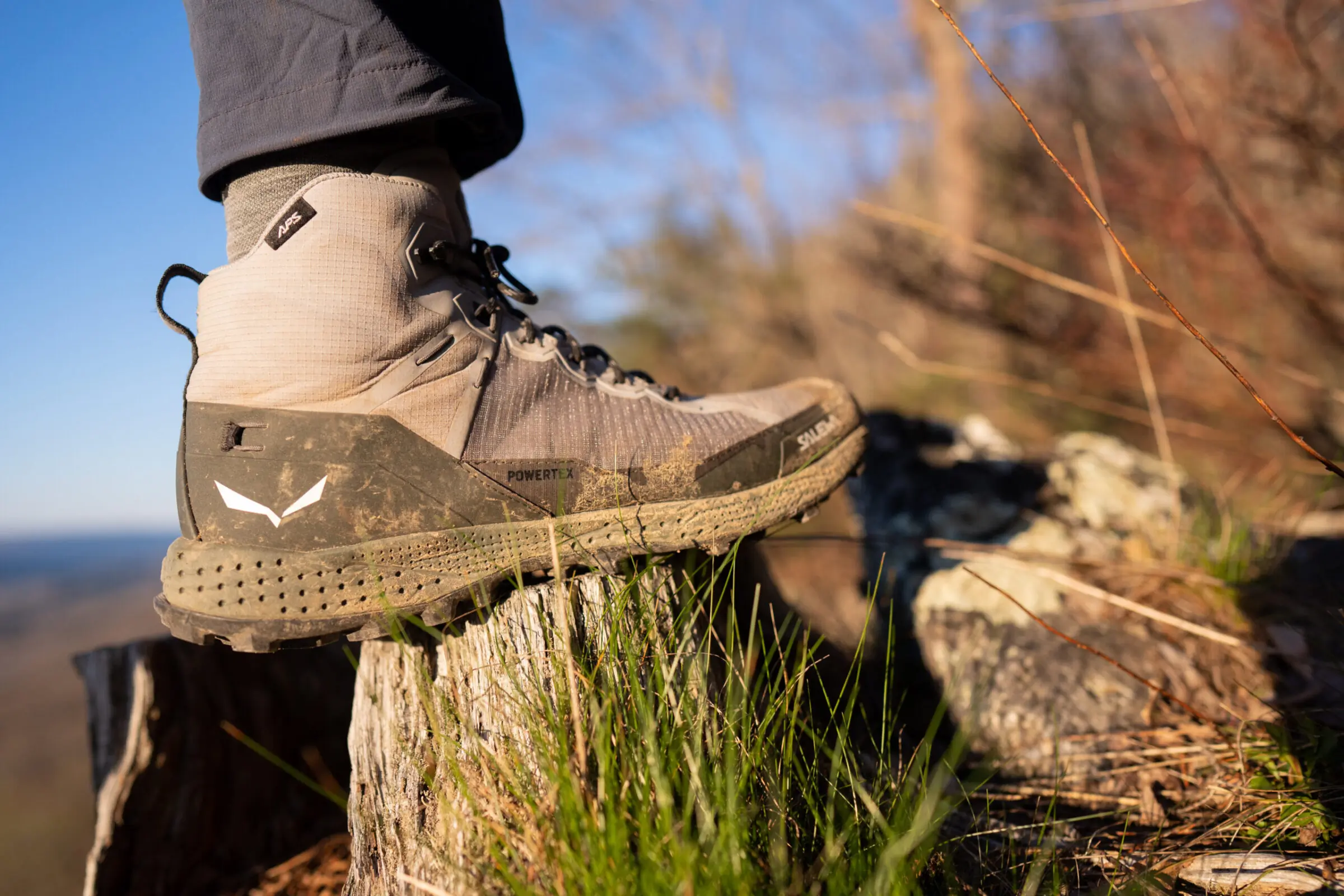



A midsole provides underfoot cushioning and adds structural stability to the entire boot. Stiff boots likely come with a thick and stiff midsole, and most often require a break-in period.
Stiffer midsoles provide the most durability, but because they have less give, they can also be harder on the feet. Stiff midsoles are ideal for providing traction on highly technical terrain where foot movement isn’t ideal, such as mountaineering, ice climbing, and movement over variable terrain like talus fields.
Soft and flexible hiking boots are built with thinner, more pliable midsoles. Stiff boots can prevent your feet from becoming tired and sore, but flexible boots may be more comfortable and nimble for fast and light hiking, and they tend to prevent blisters.
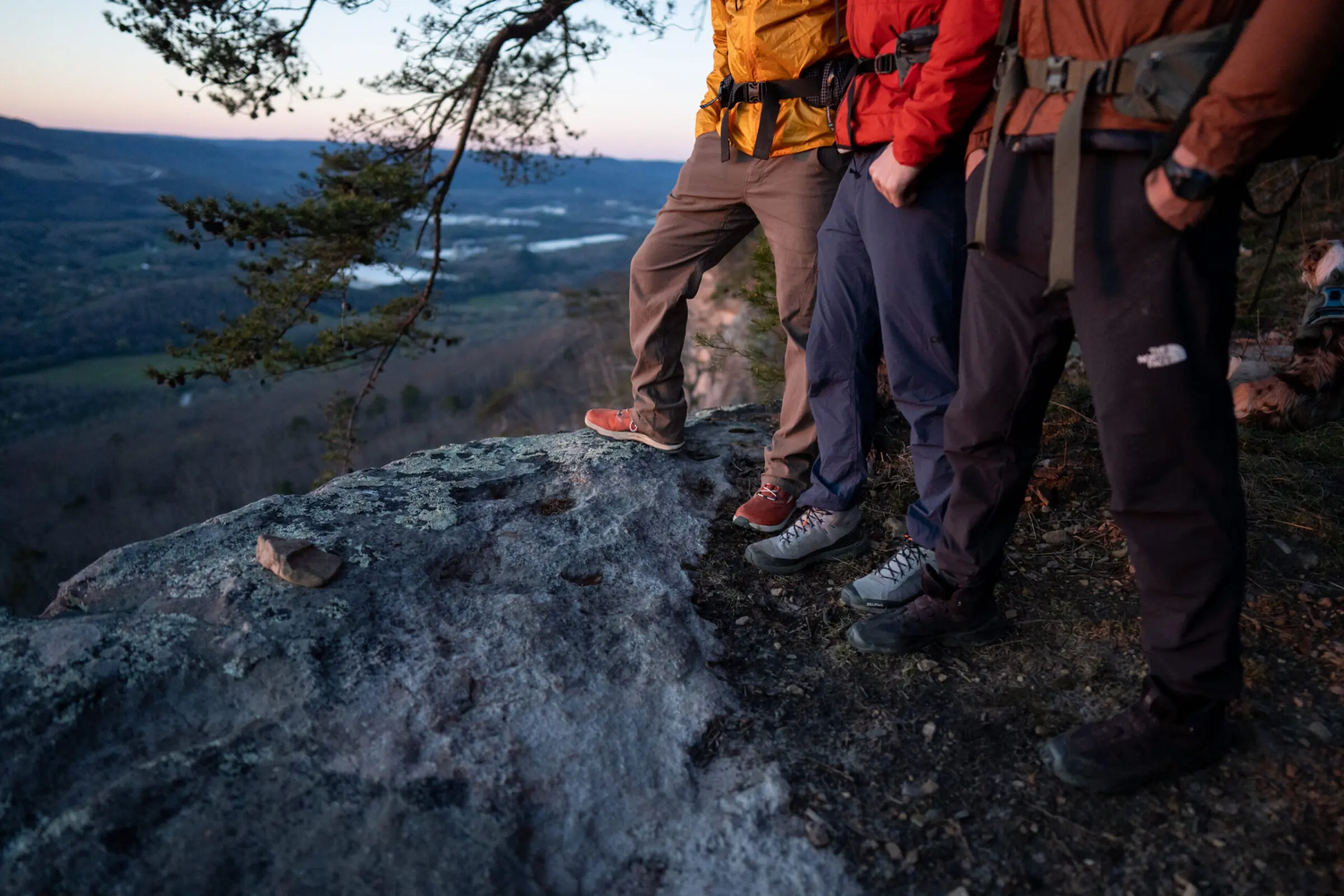



Modern hikers engaging in long-distance pursuits are finding that softer midsoles provide the balance of technical performance and comfort they need for extended use, turning to boots like the Altra Lone Peak All-Weather Mid for their long-distance endeavors.
Midsoles are generally made from EVA or polyurethane. EVA is lightweight and soft, while polyurethane is firmer and more durable. If you plan to hike long distances with a heavy pack, either is a viable option, but it really depends on your personal needs.
If you have weaker arches and require support, stiffer midsoles can prevent unnecessary soreness over long distances. If you’re already used to more minimal, flexible footwear, softer midsoles allow the muscles in your feet to function more as nature intended. PCT hikers, for example, are trending toward softer midsoles that limit blistering and strengthen the feet over time.
Outsoles


The outsoles of hiking boots are made of rubber with varying grades of stiffness and grip. Harder outsoles on stiff boots sometimes include additives such as carbon to reduce weight. While extra-stiff outsoles are durable and good for carrying heavy loads, they can feel slick when hiking off-trail.
Stiff outsoles are ideal for scrambling on steep rock or other situations where traction is integral to safety. Softer outsoles are ideal for packed, heavily trafficked trails where technical terrain is less frequent. A boot that bridges this gap quite well is the La Sportiva Nucleo High 2 GTX.
All outsoles include a lug pattern designed to increase traction and grip. Widely spaced lugs are less likely to accumulate mud, while shallow lugs are better for hiking over rocky surfaces.
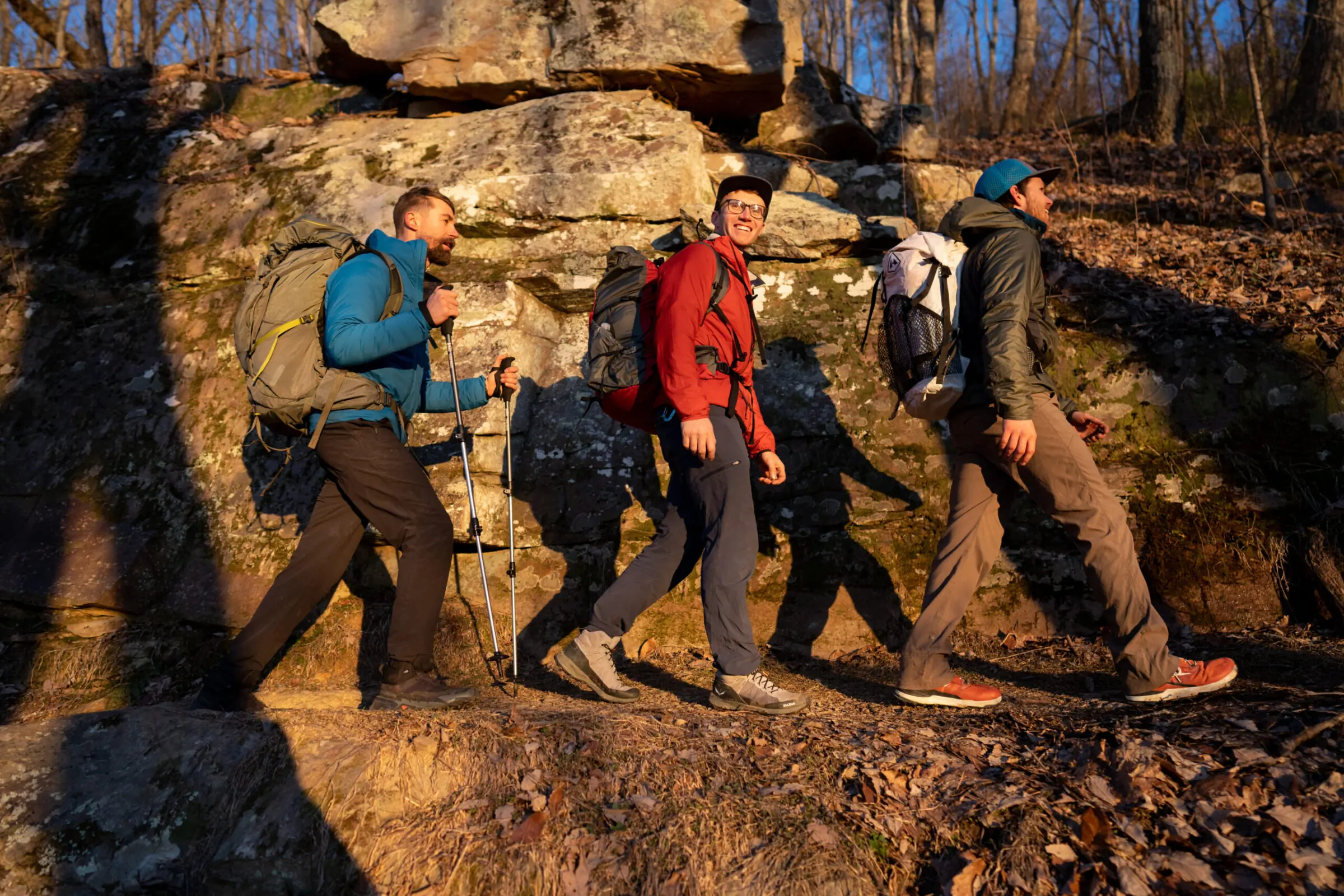



Some lug patterns are symmetrical, while others have a degree of asymmetry that’s primarily integrated to reflect the natural contours of the feet through the footfall. Both have varying degrees of stiffness, so choosing the right lug pattern tends to be a personal preference.
Some outsoles include a heel brake, which can reduce your chances of sliding while descending steep slopes. Most modern hiking boots integrate a heel brake to some degree, as do most running/hiking hybrid shoes.
Take this into consideration if your backcountry travels are going to take you up and over high-altitude passes or on trails that are particularly steep.
Weight
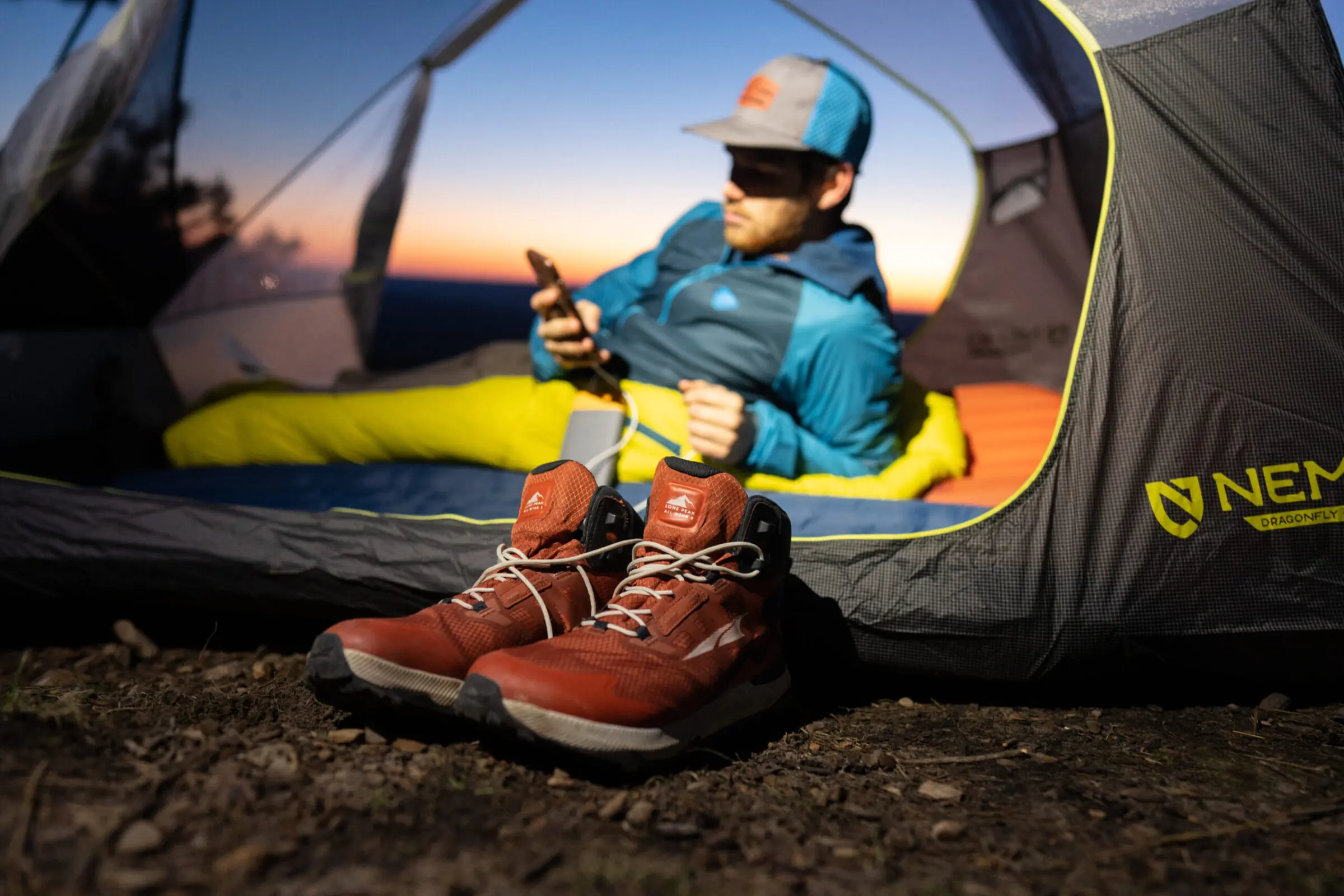



A pair of hiking boots can weigh anywhere from 1.5 pounds to well over 4 pounds. The weight of your boots will depend on their structure and materials.
Generally, more robust boots with leather uppers and stiff soles will be heavier (such as the Meindl MFS-Vakuum Hiker), while hybrid synthetic models will be lighter (Like the SCARPA Rush 2 Pro Mid GTX)
There is always a give and take with weight. So, heavier boots often prove to have higher degrees of waterproofness and long-term durability, though they may not be the most comfortable options.
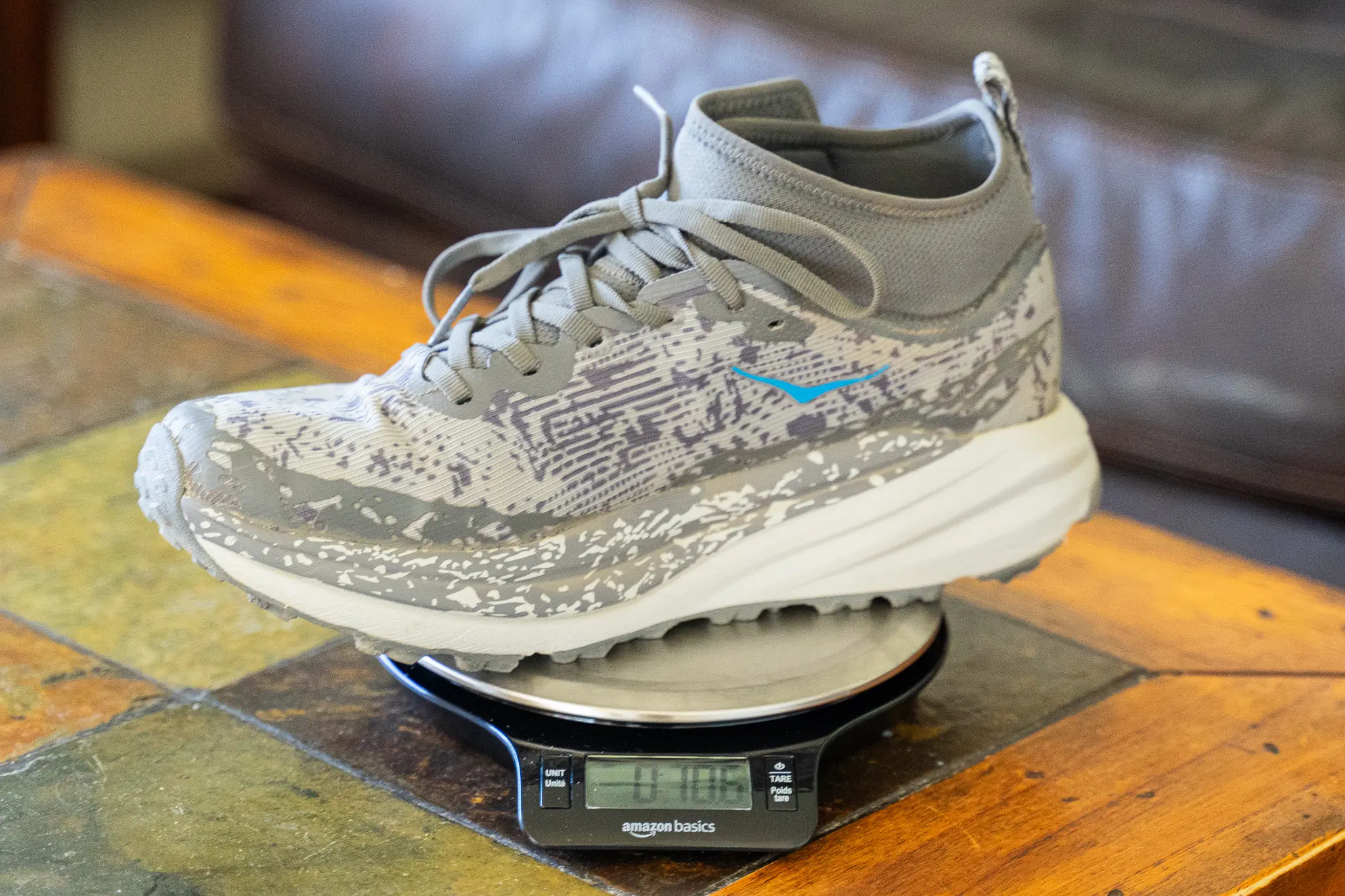



Synthetic boots with flexible soles will be lighter and perform more like running shoes. Carrying heavy boots on your feet on long hikes can cause fatigue, but heavy boots also tend to offer more support. As we’ve previously stated, it’s important to know your personal needs and shop accordingly.
In the summer months, it’s not uncommon to see people hiking in rugged lugged sandals. Most often, however, it’s not their first rodeo, and they’ve long developed the foot strength to strip weight and transfer more work to the muscles of the feet.
Support & Stability


If you’re hiking with a heavy load, you’ll most often want some stable and supportive hiking boots. A stiff outsole and midsole in a boot like the Asolo TPS 52 GV EVO add support underfoot. And a nice firm ankle collar supports the ankle joint when missteps over loose ground are a possibility.
Heavier boots tend to have rigid ankle support, whereas lighter hybrid options tend to have more of a sock-like fit around the ankle. Our ankles are intended to have a certain degree of flex, and some have more stable ankles than others. This is another important factor to consider when choosing the best boot for your feet.
Arch support is another key factor to consider, and also depends on your personal preference and foot shape. Some people have higher, active arches and can use boots without much arch support (like the Altra Lone Peak) over long distances without issue.
Most manufacturers limit the amount of arch support they include in the footbed to accommodate a variety of foot shapes out of the box. If you know you need arch support but don’t necessarily need orthotics, more traditional, rigid boots like the Danner Mountain 600 EVO tend to offer more built-in support underfoot.
Traction
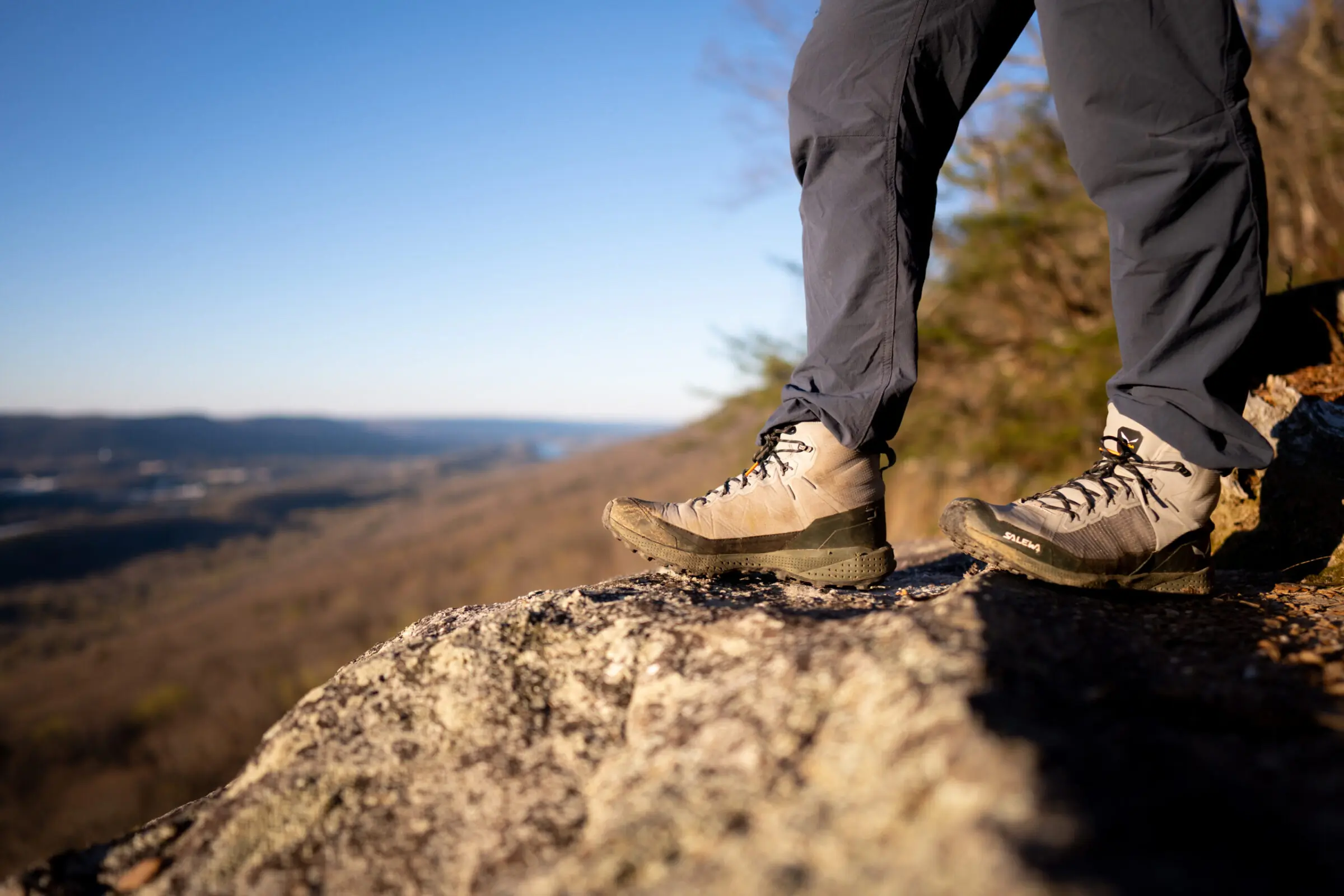



Different lug patterns are designed for different kinds of terrain. Although some boot companies make their own outsoles, Vibram soles are still the standard for high-quality outsoles and maximum traction. Vibram makes a wide variety of soles, from extremely stiff soles for mountaineering and scrambling to more flexible soles for running and hiking on packed trails.
Some boots include a smooth section of rubber under the toes for smearing on slabs of rock. Other boots have deep lugs built for soft or muddy trails. Most lug patterns work for a variety of terrain, but if you will be hiking in extreme conditions, look for something more aggressive with larger or pointier lugs.
On steep and loose terrain, a heel brake is a handy feature. This is the defined spot on the heel that helps prevent slippage when walking downhill.
Waterproofing
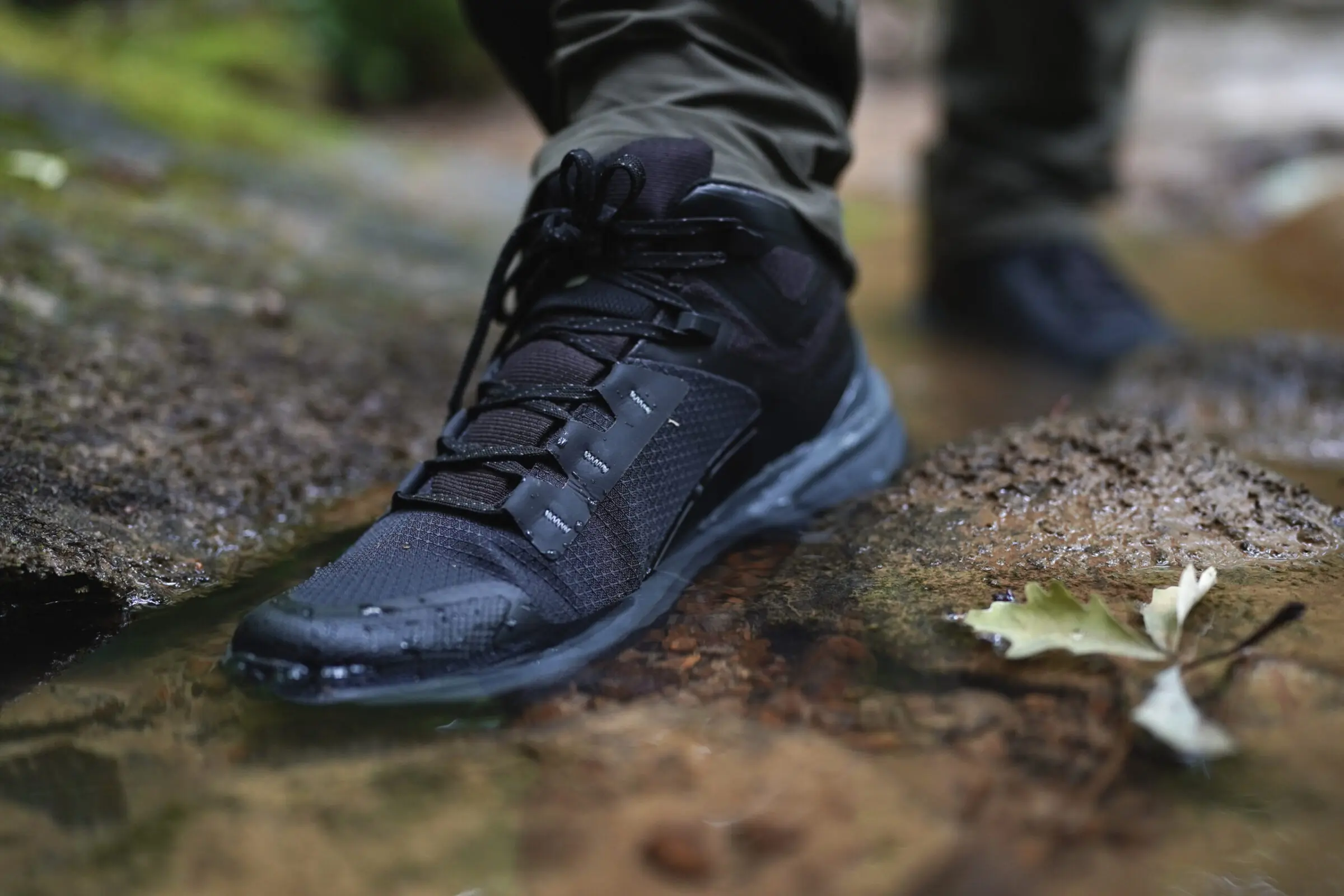



If you’ll be wearing your boots when it’s rainy, snowy, or cold, get a waterproof and breathable pair. They’ll keep moisture out, which will keep your feet comfortable regardless of how many miles you’re ticking off.
The trade-off between impermeability and breathability is evident in heavier boots, so consider something lighter weight if your feet will be getting wet but not soaked. Generally, the more waterproof a boot is the heavier and less breathable it will be.
There are a few exceptions, however, and modern advances in venting seem to be improving this age-old dilemma, hence our rave reviews of the SCARPA Rush 2 Pro Mid GTX.
If you’re hiking primarily or exclusively in hot, dry conditions, don’t get a waterproof boot. A membrane-free boot will keep your feet cool and dry, and the release of moisture can help prevent blisters. If you live in the high desert surrounded by mountains, you’ll probably need a summer boot and a shoulder season boot for when moisture adds more variability to the trails.
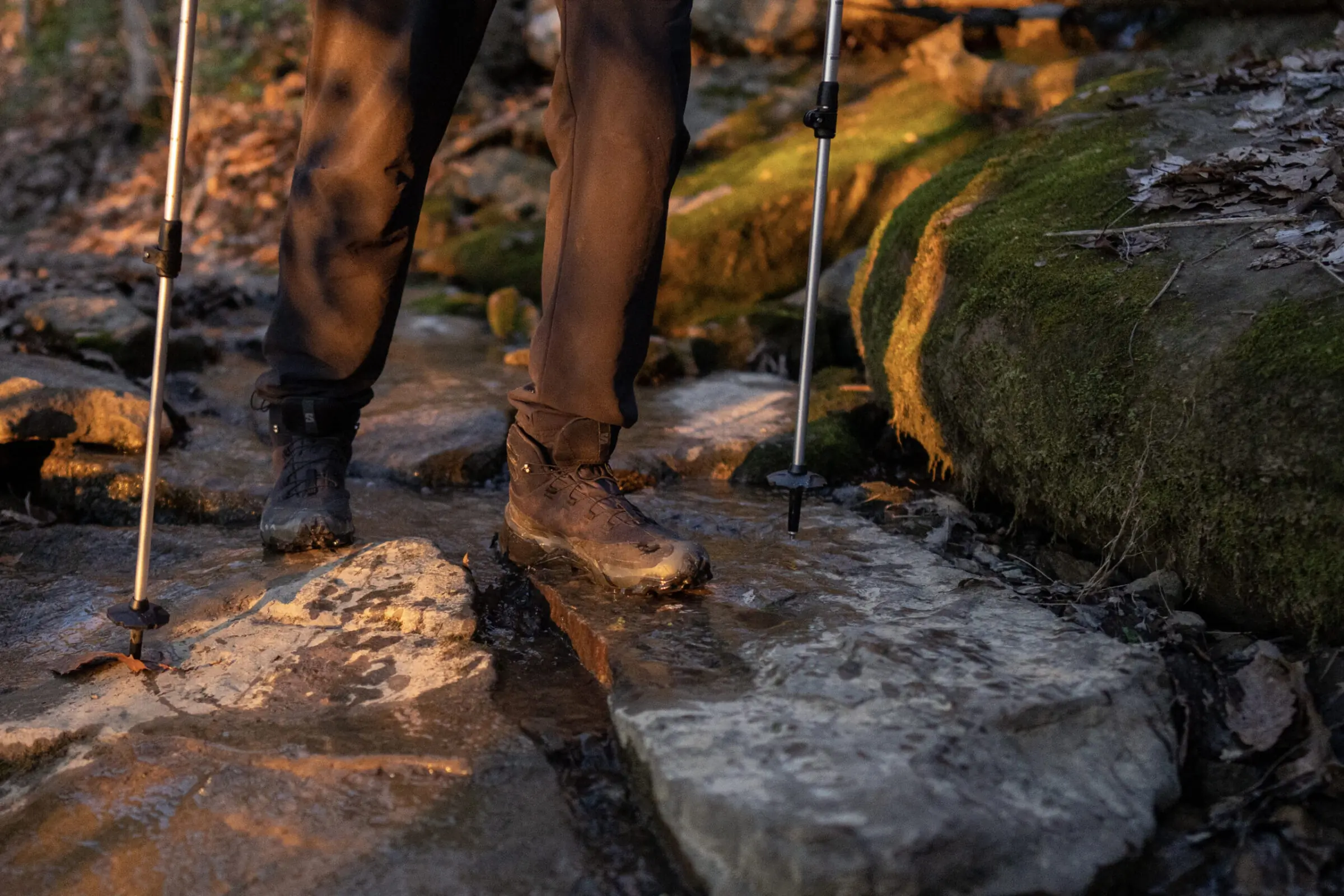



Breathability
As mentioned above, breathability and waterproofness are tied together, for better or worse. The more waterproof a boot is, the less breathable it will be, and vice versa. If you’re hiking in hot, humid environments where you don’t expect to encounter water, a lightweight, ultra-breathable boot is ideal (the HOKA Speedgoat 6 Mid, for instance).
When your feet don’t air out, you increase the risk of blisters and more serious injuries like trench foot (way more common in older, less advanced boots). Breathability not only means that air can move through and out of the shoe, but it also lets water vapor escape. Dry feet stay warmer in colder temperatures as well.
All modern manufacturers take this into account when designing the best hiking boots, so some element of breathability will be built in. Still, it’s an important consideration for your unique feet (sweaty vs. dry), as swampy/cold feet can truly make or break an outing.
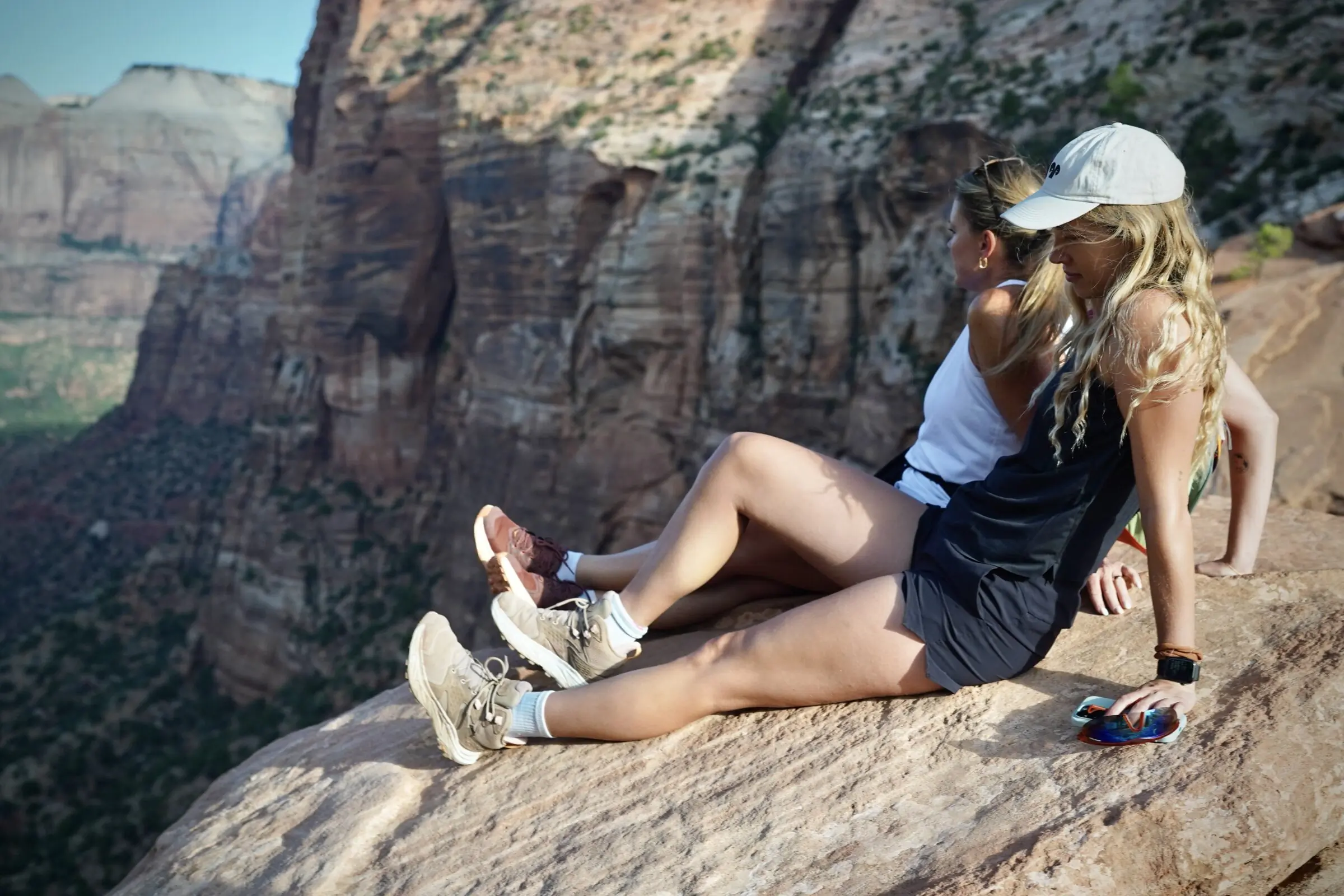



Insoles
Not all hiking boot insoles will be a good fit for every foot. Depending on the shape of your foot, you may need to purchase insoles separately. If you have a high arch, look for insoles that cater to this trait specifically.
Other insoles promote a flatter, more natural footfall, while others can increase the amount of heel-to-toe drop. If your insoles are wearing out faster in a specific spot, it’s a good sign that you should explore a different option.
Toebox Room
For hikers who have feet with toes that splay out more than others, or just naturally wide feet, boots with narrow toeboxes can be uncomfortable over long distances. As the miles stack up on a long journey, your feet will also swell quite a bit, exacerbating the issue. This can lead to blisters, plantar fasciitis, or other foot issues.
If you feel like your toes are playing a game of sardines in every hiking boot you try, it may be time to give wide-width boots a shot, or models that have enlarged toeboxes. Altra is the king of ultra-wide toebox clown shoes, and though they may look silly, they afford you some of the most natural-feeling strides of any boot we tested.
Zero-drop, with plenty of space for your toes to breathe with each step, Altra boots leave very little to be desired. We tested the Lone Peak All-Weather Mid 2 for this guide, but every Altra shoe boasts this roomy feature.
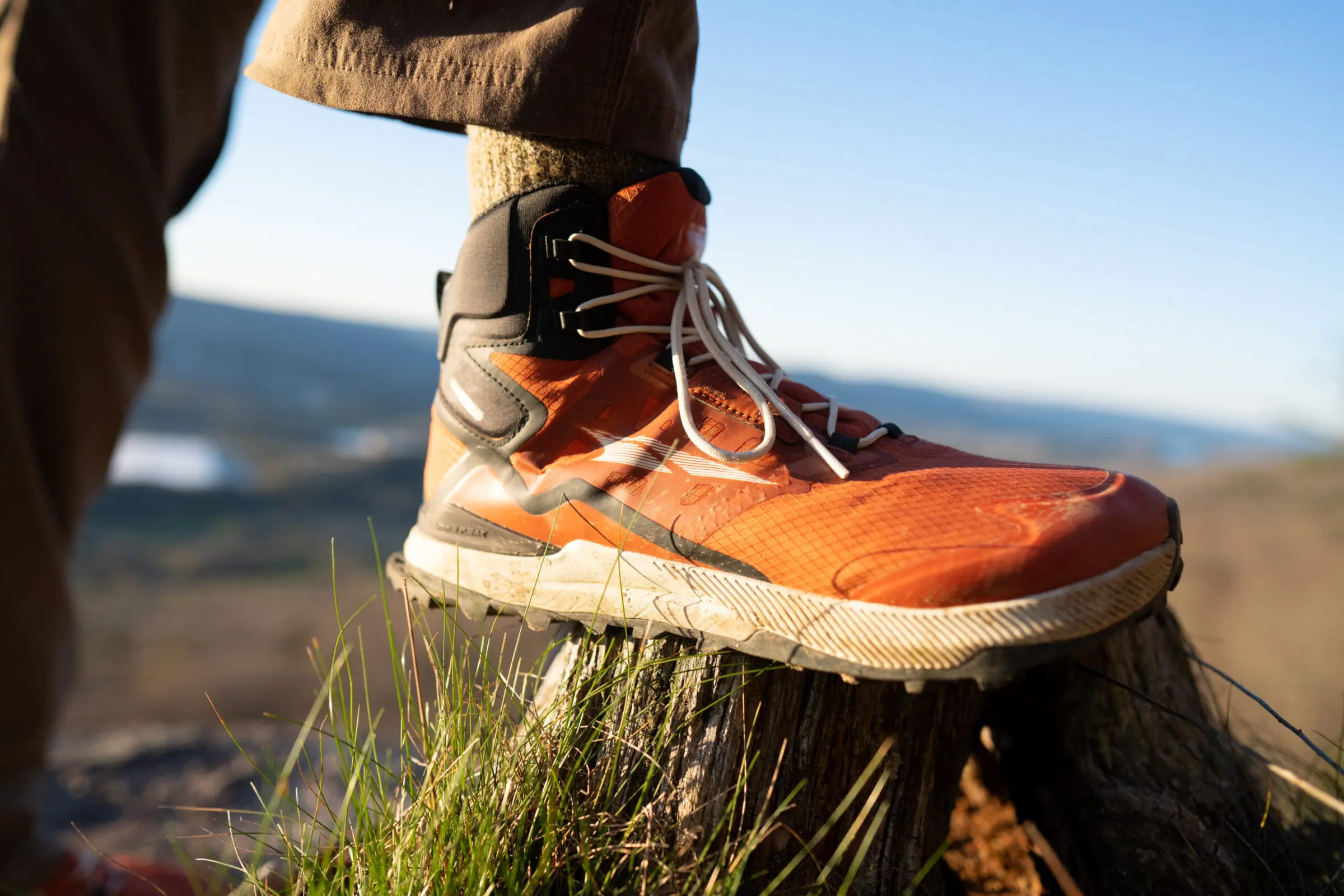



Crampon Compatibility
If you plan to do some major winter hiking or mountaineering, you’ll need boots that work well with crampons. These traction devices are critical for extreme conditions, and they provide traction when crossing steep snow or ice. In general, heavier, stiffer boots are more compatible with crampons.
The La Sportiva Trango Tech GTX Boot is a perfect example of a lighter-weight crampon-compatible boot. Micro-spikes are becoming increasingly popular for thru-hikers who prefer to carry less weight while ultralight backpacking, and they tend to work well over more flexible, lighter boots like the Salomon X Ultra 5 Mid GTX.
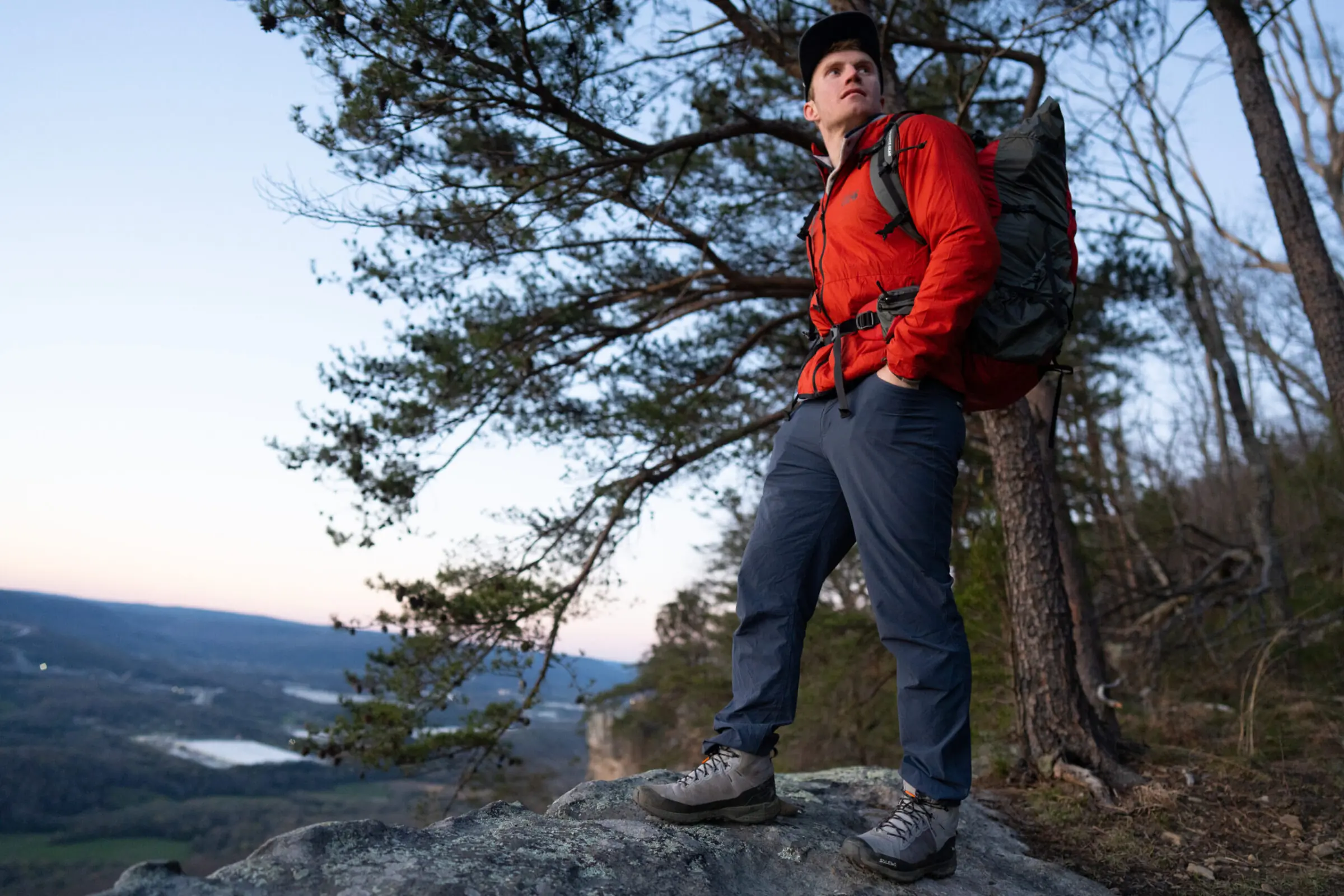



Price & Value
The boots in our guide range in price from $165 to $440. So if money isn’t an issue, should you just go ahead and buy a $440 pair of boots? No! Fortunately, all of the boots in this guide are high quality, and our Top Pick is actually on the cheaper end of the spectrum. Our price and value breakdown can help you understand what you need in a boot, what you don’t need, and what exactly you’re paying for when you shell out the big bucks.
Budget
“Budget” is often correlated with lower quality. In terms of the boots we tested, price and quality correlations are not quite so clear. Our Best Budget pick is the he Merrell Moab 3 ($150). This boot employs a combination of pigskin leather and synthetic material to balance durability and cost savings.
It’s a wide-fitting, comfortable boot, but it is not the most supportive and not the best choice for long distances or backcountry work. The KEEN Targhee IV ($165) is slightly more expensive and offers a little more support and durability. It’s a mid-height boot with a durable leather upper and Keen’s proprietary waterproof liner.
One way manufacturers can keep prices lower is by using a proprietary waterproof liner instead of jumping on the GORE-TEX wagon, a process that involves licensing, testing, and design requirements to meet the standards of the GORE-TEX brand.
Proprietary liners vary from brand to brand in their degrees of breathability, and GORE-TEX has loads of data (and marketing) that suggests their liner is the most breathable. However, all the proprietary liners are quite effective at keeping water out.
The less expensive models in our guide typically have synthetic or partially synthetic uppers. Synthetic uppers are less expensive to produce and generally breathe much better than boots with all-leather uppers, while a fully leather upper is much more durable than synthetics.
Mid-Tier
Most of the boots in this guide inhabit the mid-tier of boot prices, including our best overall choice, the Salomon X Ultra 5 Mid GTX ($175). Mid-range boots often get a GORE-TEX liner and may have a full leather upper. They’re heavier, more durable, and offer more protection than the lighter (albeit more comfortable out of the box), less expensive boots.
If you’re going backpacking or hunting, or in a situation where you’ll be carrying a lot of weight in the backcountry, these boots are worth shelling out a little more. The upper end of the mid-tier includes boots like the La Sportiva Nucleo High 2 GTX ($239), a high-top full-leather, waterproof boot that can even handle some light-duty mountaineering.
Premium
The most expensive boots on our list are heavy-duty boots like the ones your dad wore. Ranging from $300 to $400+, these are tanks for your feet that often meet the protective standards for wildland firefighting or trail building. They take a significant amount of time to break in, and we recommend wearing them around the house and dialing in your sock game before committing to big miles. They’re the most supportive boots made, and once you’ve paid the entry fee and achieved a good fit, they’ll last you the rest of your life.
Hunters, trail workers, arborists, and anyone who needs to trudge through mud and snow while off-trail and carrying a heavy load should consider a premium boot. The Asolo TPS 52 GV EVO ($360) is a killer boot that will easily handle snow and ice while you hike with chainsaws or pulaskis, or haul a kill out of the wilderness.
Frequently Asked Questions
The most comfortable hiking boots are ones that feel good when you put them on before your hike — and that still feel good when you take them off at the end of your hike.
A very soft boot might feel great to slide into at home, but it might not have enough support or protection to leave you feeling great after a long day on the trail.
If they fit your foot well, the Salomon X Ultra 5 Mid is the best lightweight hiking boot today. We loved them for their feather weight, superb support, and excellent outsole. There are many other good options on the market, but the X Ultra has been a top choice for several years.
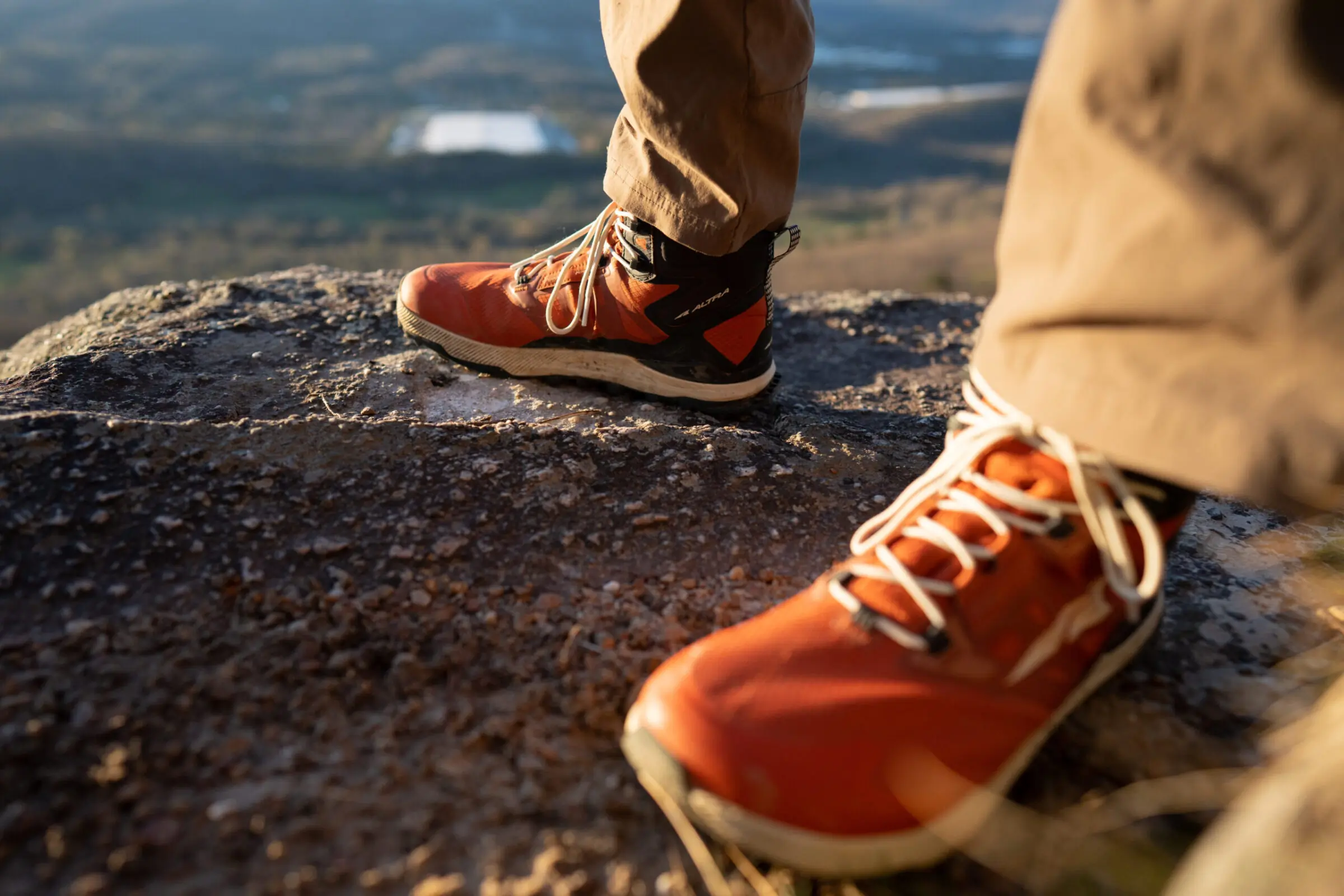



Whether you hike in shoes or boots is a personal preference. Hiking boots give more ankle support, so if you’re carrying a heavy load backpacking, they’re a great choice. But many thru-hikers wear hiking shoes for big adventures, like the Appalachian Trail.
Structure underfoot matters as much as how high the boot is. Choose a boot or shoe that feels good to wear and gives you confidence when you’re hiking.
If you plan to regularly hike in wet and cold environments, it may be wise to get waterproof hiking boots. You may not plan on getting wet, but it’s always a possibility in the outdoors. Waterproof boots make sure you’re prepared for anything. Depending on the weather and season, you may want a pair of winter hiking boots.
That said, waterproof boots tend to be hotter and less breathable. So, if you plan to hike in warm and dry conditions such as the desert, waterproof boots are not the best choice.
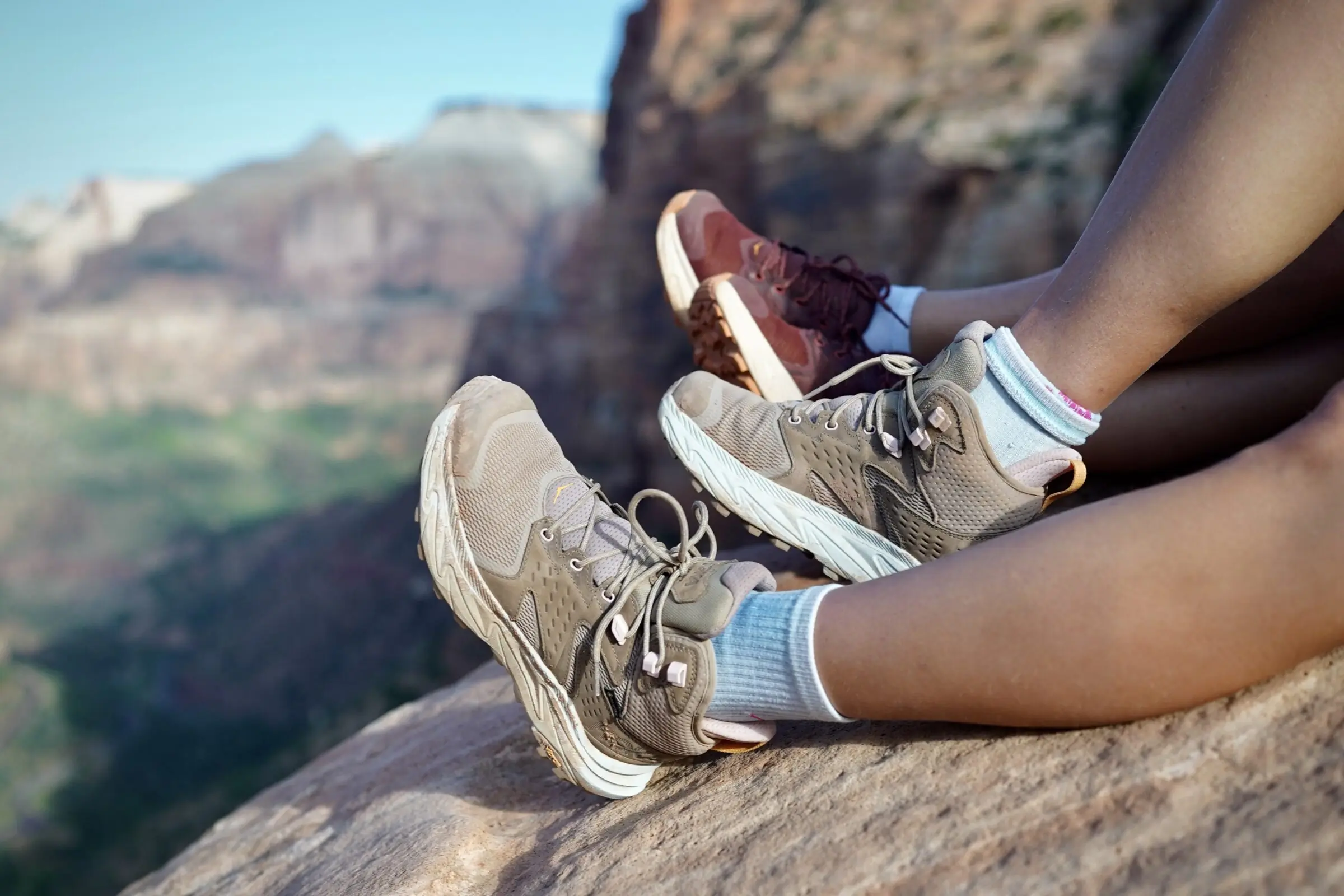



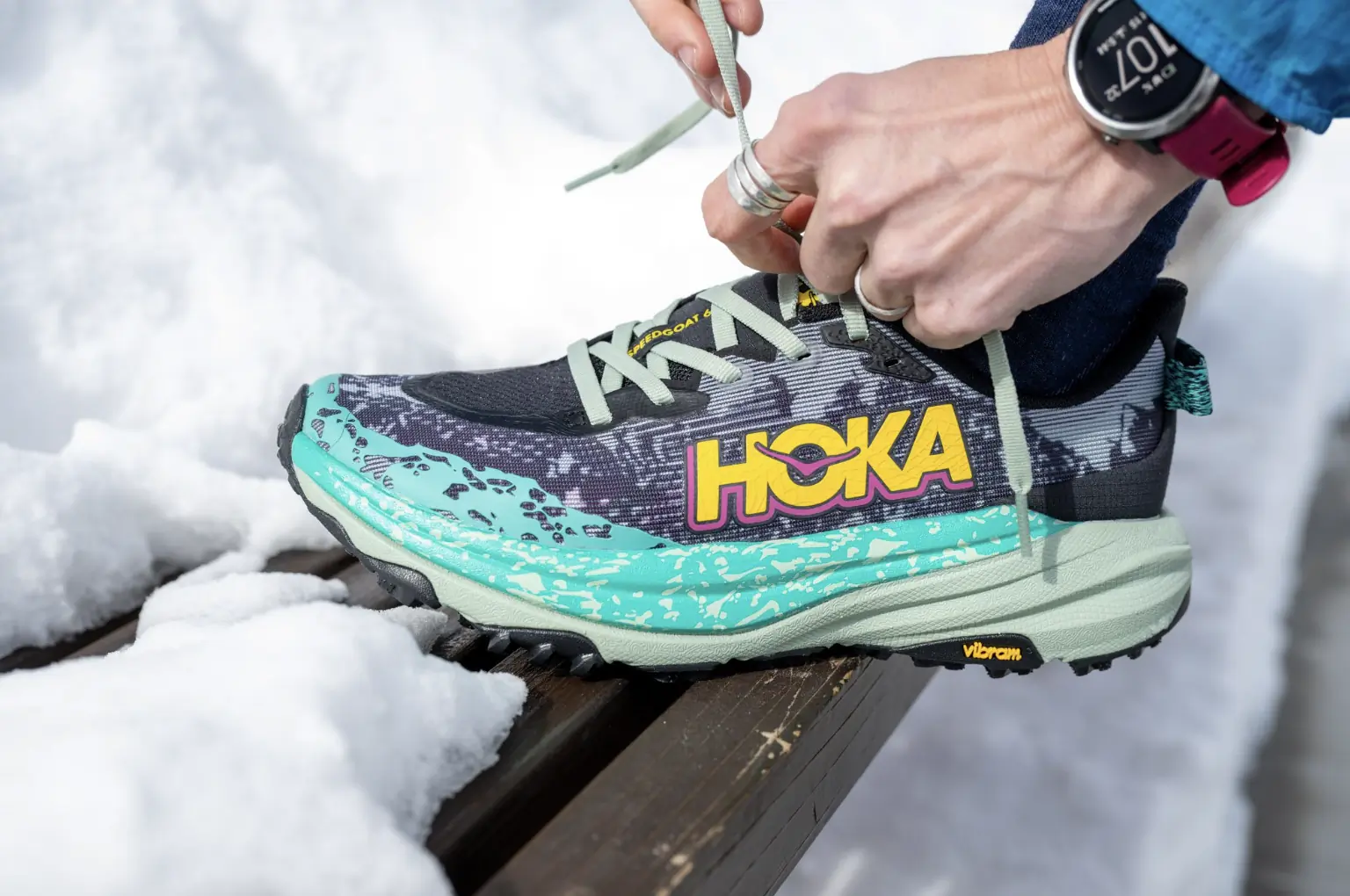

The Best Hiking Shoes of 2025
We tested and ranked the best hiking shoes for men and women for 2025, including top picks from Hoka, Salomon, Merrell, SCARPA, and more.


The Best Hiking Boots for Women of 2025
We tested the best hiking boots for women from Scarpa, Merrell, Salomon, La Sportiva, and more to help you find the best option for your needs and budget.


